

SPRING 2024 | VOLUME 10 | ISSUE 2 Drake Political Review 1
EDITOR IN CHIEF

LETTER FROM THE EDITOR
Dear Reader,
Oh what a year it has been. Since we last spoke, Drake has lost a beloved mascot (RIP Griff I), Beyonce has released a country album and politics has gotten more divisive than ever before. The spring issue of DPR comes at a pivotal point in our nation as we enter the 2024 Presidential election cycle, and we are here to cover it all. In this issue we explore top issues on the ballot as well as a variety of hard-hitting current events impacting college students across the globe.
It has been the honor of a lifetime leading such a talented staff of editors, designers and writers to create this magazine, and I could not be more thankful that DPR exists as a platform for politics to be investigated and discussed on our campus. As I get ready for graduation in the next couple of weeks, I will be reminiscing on the laughs shared, gossip spilled and important conversations had at weekly DPR meetings. Thank you for supporting student publications, the work we do is only possible because of support from readers like you.
LET’S TALK POLITICS!

ART TEAM

“Fight for the things that you care about. But do it in a way that will lead others to join you.”
—Ruth Bader Ginsburg

ASSISTANT ART DIRECTOR EMILY ZELLER
“Every accomplishment starts with the decision to try”
—Michelle Obama
© SPRING 2024 DRAKE POLITICAL REVIEW IDEAS EXPRESSED IN THE MAGAZINE DO NOT NECESSARILY REFLECT THE VIEWS OF DRAKE UNIVERSITY
EDITOR IN CHIEF MADELINE CRAWFORD
ART DIRECTOR PAIGE MINOR
OUR EDITORS

STAFF EDITOR
GRACE RILEY
“Pretty soon I think you’ll have Republicans, Democrats and Hip Hop as a party.”
—Pitbull

ASSISTANT EDITOR
EMILY VOLLMER
“Politics is the art of looking for trouble, finding it everywhere, diagnosing it incorrectly and applying the wrong remedies.”
—Groucho Marx

STAFF EDITOR
LAURA NOEHREN
“Women are like teabags- you don’t know how strong they are until you put them in hot water.”
Eleanor Roosevelt
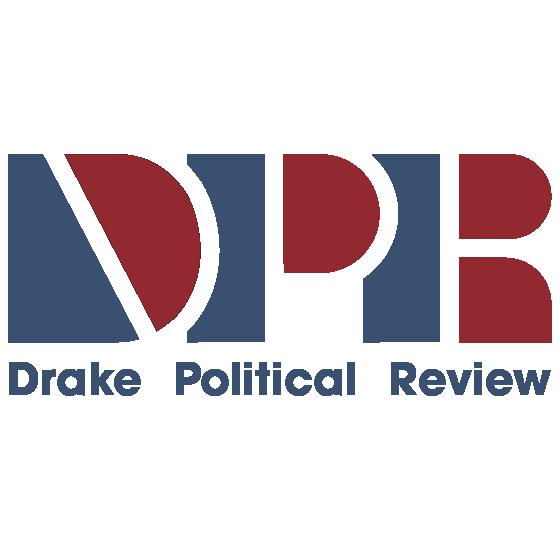

STAFF EDITOR
PARKER WRIGHT
“If I had to name my greatest strength, I guess it would be my humility. Greatest weakness, it’s possible I’m a little too awesome”
—Barack Obama

ASSISTANT EDITOR NORAH JUDSON
“Everything is changing. People are taking their comedians seriously and the politicians as a joke.”
—Will Rogers
GRACE RILEY
SCOTT JENSEN
MAGGIE BLAIR
SKYLAR LATHROP
LILY WASSERMAN
CONTRIBUTERS
JACK HARRINGTON
MARGARET GORHAM
MADELINE CRAWFORD
KIRA SCHALL
RACHEL KOHL
JACK MALINSKI
PARKER WRIGHT
NORAH JUDSON
FACULTY ADVISOR
JENNIFER GLOVER KONFRST
Drake Political Review 3

IOWA BRED ACROSS THE POND
CRISIS AT THE BORDER
UKRAINE: THE FORGOTTEN WAR
HOW TO PROTEST LIKE THE FRENCH
TO BE A TEACHER IN IOWA
FISCAL ROADBLOCKS
OVER STATE LINES
THE SWIFT EFFECT
MUSIC AND POLITICS
IPAD KIDS V. U.S. GOV
PUFF PUFF PASS IOWA’S STAND AGAINST VAPING
TRIGGERING CHANGE
REPUBLICAN CIVIL WAR
KEEPING UP WITH THE HOUSE
COLLEGES ARE BROKE
3RD PARTIES IN THE USA
TABLE OF
CONTENTS
Drake Political Review 5
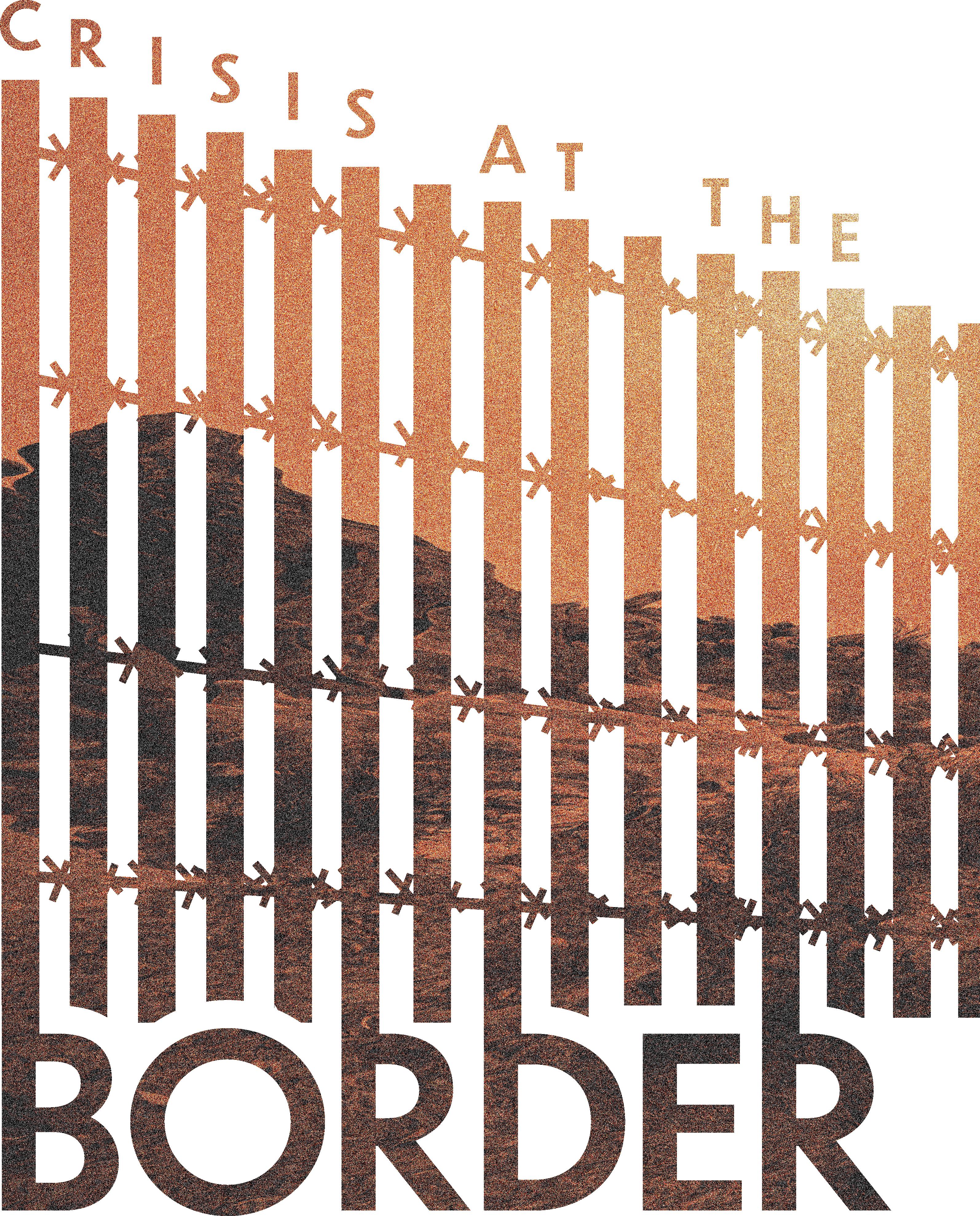
ACROSS THE POND 6 Spring 2024
Conservative and progressive political campaigns signal that they care about the U.S.-Mexico border but in vastly disingenuous ways. Anti-immigrant rhetoric seeps into policymaking and even the most progressive campaign promises fail to address immigration issues. This year Americans are faced with a voting decision about which presidential candidate will minimize harm to humanity— but is that what a robust democracy looks like?

American politics and government agencies have manufactured the ‘crisis’ at the Southern border.
WORDS RACHEL KOHL DESIGN PAIGE MINOR
Racism: A Campaign Tool
In the early months of Trump’s second presidential campaign, he again stoked fear about “criminal” migrants crossing the border, blaming the Biden administration for failing to enforce border security. This point ignores Trump’s use of Title 42, a health code that superseded standard border procedures, allowing the U.S. to turn away migrants 2.8 million times during the overlap of the COVID-19 pandemic and Trump’s presidency. This policy change, enacted over three years ago, in part contributes to the major accumulation of migrants at the border now that the law is lifted.
While metaphors capture political attention in an aural context, they are often imprecise and ultimately unhelpful for the purposes of policy making. Anti-immigrant policy and rhetoric has marginalized most non-white identities (and some European identities) for much of American history, but today’s rhetoric typically targets Latinos, who make up the ethnic majority of those crossing the Southern border illegally; most migrants come from Mexico, Venezuela and Nicaragua.
The argument that immigrants steal jobs from American citizens has fallen out of mainstream conservative rhetoric, but characterizations of violent migrants dominate current talking points. Republican public rhetoric has become increasingly volatile toward immigrants, casting this
Drake Political Review 7
group as criminals, rapists and drug dealers. From a statistical perspective, this caricature is glaringly inaccurate. American citizens commit crimes at more than double the rate of the immigrant community, including undocumented people.
Rhetoric is what is guiding public thoughts and feelings toward the situation at the border, and every word used matters. Language like “invasion” is used colloquially in immigration discourse, which Trump has consistently deployed during 2024 campaign rallies. While this descriptor functions as a metaphor in speech, Republicans also use this terminology to argue a constitutional case for preempting federal immigration jurisdiction—that migrants are literally invading the U.S., therefore states have the right to enforce border protection measures.
In 2021, Texas Governor Greg Abbott implemented Operation Lone Star, an aggressive border control initiative that has influenced other Republican ran states to propose similar laws. Iowa Republicans are pushing bills that parrot the Texas legislation— bills such as making it a crime to transport an undocumented person or requiring all employers to digitally identify their employees’ immigration status—which would effectively make undocumented persons’ existence in the U.S. nonviable, Gabriel Saldana, a community advocate said, arguing that these proposals are part of a “political game.”
Other non-profits like Saldana’s Iowa Migrant Movement for Justice have been fighting policy initiatives like HF 2567, which opponents say could empower police racial profiling in the state.
Iowa House Rep. Steven Holt, the bill’s sponsor, said, in language similar to Abbott’s and Trump’s, that the law would “repel invasions,” which implies that migrants are
dangerous—and on a literal level, armed, which is largely untrue. The Drake Political Review reached out for a comment, but Holt has not responded.
“It’s all kind of just for political gain and to work on their campaigns for popularity,” Saldana said. “We had legislators admitting on the debate floor in the Senate that some of these bills… could preempt federal law and be unconstitutional. They’re setting up funds aside for when the state eventually gets sued for these laws that they’re trying to pass.”
When an undocumented person commits a crime in the U.S., media outlets and politicians often center the perpetrator’s immigration status in their respective narratives. While it’s generally journalistic standard procedure to include relevant identifying information of an individual, some of these arguments suggest that the crime is somehow worse because the person is undocumented.
Progressives, “Keep your promise.”
Many immigrant justice groups also disapprove of the Biden administration’s approach to border-related policy. Saldana, sitting in front of a poster with the words “Biden keep your promise,” said that Biden reneged on his campaign’s plan to provide a viable path to citizenship for immigrants within the first 100 days of his presidency.
“We’re failing a lot of communities in the United States on the Democratic side,” Saldana said.
Mexican cartels profit hand-over-fist at the border, but the U.S. neglects one of their largest businesses: human smuggling. The Department of Homeland Security found that the cartel made $13 billion in 2021, mostly through “coyotes,” which function as guides that help immigrants cross the Southern border. Drug trafficking at the border,

despite evidence that suggests most fentanyl is smuggled by American citizens for American citizens, is seen as a valid reason to regulate the border. In 2021, just 0.02% of people arrested by Border Patrol for crossing illegally possessed any fentanyl, and U.S. citizens were 86.3% of convicted fentanyl drug traffickers.
Making the border impermeable, however, is a violation of universal human rights. Sifting through this anti-immigrant rhetoric acknowledges the point that criminal organizations profit from border chaos, and also protects the human rights of the majority of those who cross the border. In this case, positions that insist on mutual exclusivity deny statistics and humanity at once. It is dangerous to migrants for their crossing to be guided by cartels. Real security at the border requires strong U.S.-Mexico collaboration, but history suggests that this relationship is fraught with complications.
The progressive left has underlined overpolicing as a racial discrimination issue but often fails to bring to light how migration, especially by Latinos, is largely criminalized in a racist way. Even further, about half of all federal prosecutions are of immigration crimes.
Mainstream feminist and abolitionist movements mostly exclude issues facing Latino identities. When leftist movements recognize immigrant rights, they often fail to frame the issue as racist, especially ignoring specifically anti-Latino rhetoric. In many instances, Democrats routinely ignore the border as a campaign issue.
Bureaucratic Barriers
With this perspective established, a better approach may be to not to be laissez-faire, but rather to use precision when applying immigration law. Both
the right and the left manufacture a political divide by convincing voters that there is no nuanced approach—that “hard-on-crime” policing is the only way to achieve safe communities or that any border security measure is inherently antiimmigrant—the U.S. can achieve policy that both protects American citizens and supports immigrants, whether they enter the country with authorization or not. It is also untrue that taking a centrist position on this issue, or any issue for that matter, is less forceful than a party-line approach.
Similar to many other politicized humanitarian issues, immigration policy is only given attention every four years, however as the American-Latino population grows to nearly a quarter of the American population in 20 years, it will become increasingly difficult for Washington D.C. to ignore the problem.
“I think it’s…a bureaucratic crisis, because we haven’t done anything about it for so long. It’s a problem that the federal government created for themselves by not putting any sort of real policy to address this issue for years and years,” Saldana said.
Sustainable solutions require an American investment into lifting the heaviness of the immigration system, but it’s not politically advantageous… yet. Americans across the political spectrum have long demanded a productive legislature, and based on this assessment, immigration reform clearly falls into that demand.

it’s a bureaucratic crisis, because we haven’t done anything about it for so long. It’s a problem that the federal government created for themselves by not putting any sort of real policy to address this issue for years and years,
GABRIEL SALDANA, COMMUNITY ADVOCATE FOR IOWA MIGRANT MOVEMENT FOR JUSTICE

THESWIFT EFFECT

A GUIDE TO TAYLORNOMICS
From tourism markets to local small businesses, everybody wants a piece of Taylor Swift.
WORDS MADELINE CRAWFORD DESIGN PAIGE MINOR
Drake Political Review 11

Time Magazine’s 2023 Person of the Year, most winning Grammy Album of the Year award winner, highest grossing tour of all time.
Taylor Swift’s reputation precedes her. As the pop superstar has grown to be one of the most influential artists of her generation, so has her economical impact on both national and local economies. It is clear that the “Eras Tour” has generated millions of dollars for the national economy, but in what other ways is Taylor Swift “bejeweled” the financial sector?
The Eras Tour(ism) Impact
On November 1, 2022, Taylor Swift announced the first United States wing of the Eras Tour, which included 60 shows in over 20 cities. This announcement mobilized Swifties across the nation to purchase concert tickets and essentially crash Ticketmaster, the ticketing software utilized for her VerifiedFan presale program. With concert tickets, comes tourism, and boy was there a lot of it.
Venue cities saw tremendous growth in their tourism
venue profit over $2.6 million. Interestingly enough, they reported that hotels in the surrounding Hamilton County grossed upwards of $5.3 million as a result of the Swift concert weekend.
Industries in tour cities and their surrounding counties have greatly benefited from being included on Taylor’s list of tour stops. The purchase of a ticket stub by default now includes additional budgeting for a themed outfit, beads for friendship bracelets to trade with others, a hotel or Airbnb reservation and a rideshare back home at the end of the night, among many other things.
To many fans, the Eras Tour is not just a singular night, but a once in a lifetime experience and tourism industries are not taking that for granted.
This rise in tourism as a result of the Eras Tour has been welcomed with open arms from cities still economically recovering from the Covid-19 pandemic lockdown. The Federal Reserve Bank of Philadelphia reported in their yearly Beige Book that they saw the strongest growth in hotel bookings in their city since pre-pandemic times and cited Swift as the reason.
12 Spring 2024
Putting Football on the Map
Taylor Swift’s new relationship with Kansas City Chiefs tight end Travis Kelce was arguably the biggest pop culture conversation of 2023. The megastar’s dedicated fan base found new interest in the American pastime as they flocked in unprecedented numbers to watch Chiefs games in hopes of seeing their favorite singer in the stands (or rather VIP box).
The Chiefs saw a great increase in merchandise sales, social media engagement and ticket sales as a result of the love story. According to a research study done by Apex Marketing Group, “Swift brought $331.5 million of equivalent brand value to the Chiefs from September 24— when she went public with Kelce—to January 22 alone.”
All is fair in love and football, and the National Football League couldn’t agree more. Since September 24, the NFL has capitalized off of Taylor Swift’s attendance at games, whether that be through daily social media posts of Taylor and Travis or the screen time given to celebration footage of her box suite after Chiefs’ touchdowns. Brad’s, Dad’s and Chad’s everywhere were outraged at seeing Swift on their screen cheering on her boyfriend.
The NFL is laughing their way to the bank though, as Nielsen viewership reports have found that when Taylor Swift was in attendance at Kansas City Chiefs games, “the networks averaged 25 million viewers in their respective late Sunday time slots and 16 million in their early Sunday time slots.”
Unassociated Events & Micro Economies
The pop star’s economical impact has not only been felt by the tour location cities, but on micro economies across the country as well. Local businesses everywhere have taken advantage of the Taylor Swift mania overwhelming our nation.Through hosting Taylor Swift themed events, everyone is getting a piece of the Swift economy.
Molly’s Cupcakes, a bakery in Des Moines, Iowa, has found great success in hosting Taylor Swift themed baking classes. When asked about the motivation behind hosting Taylor Swift themed classes, owner Courtney Callhan said, “Taylor Swift has a large audience of followers, from really young kids to people’s grandparents. So we knew that theme would really work with a lot of different people.”
Molly’s Cupcakes has hosted cake decorating courses for teens and adults based on aesthetics from Swift’s 2019 album, “Lover”. According to Callahan, both events have sold out within a couple days of being announced and have helped grow their business.
“Having something like a very well known brand of
Taylor Swift matched up with our cake decorating classes was really successful for us.” Callahan said. “And I think that would make us want to do more themed specific ones in the future that could draw a lot of eyeballs to our events, and then hopefully, to our store as well.”
Other local businesses and organizations have seen increased engagement and revenue from catering to Swifties.
Morgan Chicchelly is the founder of Des Moines Girl, a micromedia platform dedicated to supporting small businesses and letting people know what is going on in Des Moines every weekend. Recently, Des Moines Girl has dipped their toes into the events market, and have found great success from hosting Taylor Swift album release parties for their audience.
“I thought there might be an opportunity for Swifties to actually gather on the night of these album releases and that we could take advantage of the fact that in the central time zone they drop at 11 p.m. versus midnight,” Chicchelly said.
Chicchelly credited the lack of Swift saturation on the local market for being the catalyst for the shift to hosting Taylor Swift-adjacent events.
“The idea came because I wasn’t seeing and my team, which are also full of Swifties, weren’t seeing anything hyperlocal happening on the night of [the album releases],” Chicchelly said.
Through these Taylor-themed events, Des Moines Girl has formed meaningful community partnerships with venues like Teehee’s Comedy Club, where the events are held, as well as with local photographers and event entertainment.
According to Chichelly, the success of these events can be attributed to three important factors: the human need for community, the desire to support small businesses and their awareness of what their target audience likes.
“First and foremost, I think people just crave community and crave those feelings of spaces where they can feel authentically themselves.” Chichelly said. “Secondly, I think it’s successful because local events are appreciated and supported. I think in Des Moines, but also just nationwide. There’s just a special culture, a special magic about local people doing it for the locals in their community and I think that certainly helps.”
These events would be nothing without the guests who attend and their engagement with the small businesses. Des Moines Girl prides itself in knowing its audience very well. Chichelly shared that their audience is “heavily aligned with the Swifty demographic” and is “like 80% women ages 24 to 45.”
Until Taylor makes a concert stop in Des Moines (unlikely), local businesses will continue to thrive off of Taylor’s fame and success.
Drake Political Review 13
IOWA BRED 14 Spring 2024
Teaching has never been an easy job, but with new legislation targeting classrooms in recent years, it has only gotten harder.
WORDS JACK MALINSKI DESIGN PAIGE MINOR
Iowa’s public education system stands at a crossroads and is representative of the broader national discourse on education’s role in society. As educators grapple with evolving challenges, they find themselves navigating a landscape shaped by political, social and educational discourse. This exploration begins with an overview of Iowa’s unique position in the national education conversation, highlighting the significance of its public education system against current socio-political issues.
The New Iowa
In recent years, Iowa has become a focal point for contentious debates surrounding education. Issues like book bannings, the inclusion of Critical Race Theory in the curriculum and the ever-present concern over school shootings reflect broader societal tensions. These debates are not just academic, but they directly influence the classroom environment, shaping the experiences of teachers and students.
It’s important to understand the issues Iowa teachers and education as a whole are facing. They are not isolated challenges, but are elements that are connected and influence every aspect of educational life in Iowa.
Education in Iowa is currently being
impacted by a series of legislative actions, prominently featuring Gov. Kim Reynolds’s initiatives. The Students First Act signifies a shift toward providing families with more opportunities for private schooling through the use of state education funding, otherwise known as vouchers. This policy reflects a national trend toward school choice, but carries unique implications for Iowa’s educational system.
Gov. Reynolds’s approach to education reform in Iowa has sparked debate across the state. Critics argue that the impact on public education and resource allocation needs careful scrutiny. Her leadership underscores a significant shift towards redefining educational funding and administration, prompting discussions on the balance between innovation and the traditional roles of public education institutions.
Alongside the Students First Act, a range of GOP-driven bills are influencing the content and structure of public education in Iowa. These bills, focusing on topics like gender identity, sexual orientation and health education, are part of a broader dialogue about the role of education in shaping societal values.
The legislative push to restrict certain content in schools has ignited debates across the state. These debates have given voice to differing views on education’s purpose.
Drake Political Review 15
A Revised Lesson Plan?
The impact of these policies extends beyond the legislative chambers, directly affecting the classrooms and teachers. As these bills become law, educators are tasked with navigating new guidelines and restrictions, all while striving to provide a comprehensive and inclusive education to their students. The specifics of these policies, their motivations and the debates they have spurred within the educational community are integral components to how education will look in Iowa.
The implications of Iowa’s recent educational policies are, arguably, most significant for teachers who are on the front lines of implementing new policies. Some educators are finding themselves needing to adapt curriculum and teaching methods in response to new restrictions and guidelines. This adaptation process is not uniform; it varies significantly between urban and rural settings, reflecting the diverse educational landscape of the state.
Maggie Meyers, a sixth-grade teacher at Keokuk Middle School, a predominantly rural district, shared her experiences with recent educational policy changes. Despite the statewide discussions on book bannings and curriculum restrictions, Meyers has seen minimal impact on her teaching materials.
“Our curriculum hasn’t changed. It’s still the same, but we didn’t really focus on the topics they banned anyway,” Meyers said. However, she did highlight a significant change in the removal of several books from the school’s library and her classroom being combed through to ensure no banned content is available.
Additionally, Meyers noted that available resources have not changed yet but thinks it could be different down the road.
Tension in the Classroom
The challenges faced by teachers are multifaceted, including not only curriculum changes but also the broader context of their work environment. The implementation of transparency measures, for instance, poses financial and logistical challenges for schools, potentially affecting resources available for other educational purposes. Teachers are navigating these changes amidst debates on education, adding an additional layer of
complexity to their roles.
Classroom dynamics are evolving as teachers and students navigate these legislative changes. The way controversial topics are addressed can significantly influence the learning environment, shaping students’ educational experiences and their understanding of the world during development periods of their lives. There are ways in which Iowa’s legislative changes are impacting teachers’ day-to-day experiences and the overall educational climate in their classrooms.
Personal accounts from Iowa’s teachers provide invaluable insights into how legislative changes are playing out in classrooms across the state. These perspectives reveal a range of experiences, from challenges in adapting teaching methods to the impacts on student engagement and learning. Teachers’ stories highlight their resilience and creativity in navigating a shifting educational landscape, offering a ground-level view of the changes underway.
In rural areas, where schools often serve as community hubs, the legislative changes can have particularly pronounced impacts. Teachers in these settings may face unique challenges adapting to new policies. Conversely, urban educators encounter a different set of challenges, navigating diverse student populations and a range of viewpoints on legislative changes.
16 Spring 2024
Legislative Pushback
Recently retired teacher Elizabeth Collins shared her perspective on Iowa’s education reforms, especially regarding Area Education Agencies. She acknowledged the potential benefits of giving school districts more control over education funding but expressed concerns about the execution and potential impacts on service quality for students with disabilities.
“Transparency and accountability are vital, but they need to be paired with adequate support and resources. It’s not just about moving funds or changing oversight, it’s about how the changes and different things they do translate into better support for students, especially for children with disabilities,”
Collins said.
It’s not just about moving funds or changing oversight, it’s about how the changes and different things they do translate into better support for students, especially for children with disabilities,
ELIZABETH COLLINS, RECENTLY RETIRED TEACHER
Having experienced many different educational settings, Collins also commented on diversity in the classroom, “Any legislative change must consider the diverse needs of our student population, including cultural and economic differences, and I fear that’s not happening.”
To Collins, the most important thing current educators can do is stay informed.
“We need to be proactive in advocating for our students, and ensure that any change truly benefits thestudents,” she said
In listening to teachers’ voices, it is possible to gain a more nuanced view of the educational changes unfolding in Iowa, illuminating the realities of teaching in a state at the forefront of national debates on education.
Were We Are Now
Educational reform in Iowa is deeply intertwined with the state’s political landscape, reflecting broader ideological battles over the role of education in society. Insights from those close to the policy-making process, particularly around Governor Reynolds’ initiatives, shed light on the motivations driving these changes. Understanding these motivations is key to the broader political dynamics at play and their implications for education in Iowa.
The debates surrounding these policies are not confined to the legislature. They are spread across the state, engaging a broad range of stakeholders, from educators and parents to students and community members, each bringing their perspectives to the table. The conversation surrounding education in Iowa is a reflection of the state’s populace and the differing views on how best to prepare the next generation for the future.
The controversies surrounding the current state of education in Iowa, notably around book bannings, CRT and school safety measures, have sparked intense public and educator reactions. These controversies are a reflection of national conversation and societal divisions. Public forums, social media platforms and community meetings have become arenas for debate, with stakeholders voicing their concerns and advocating for their visions of education.
Looking Forward
As the state continues to navigate these changes, the long-term impacts on the educational system, its students and its educators remain a subject of speculation and concern.
The role of education in addressing broader societal issues is a critical aspect of the future outlook for all of Iowa. As educators, policymakers and community members grapple with these challenges, the direction the state takes could serve as a trendsetter for national decisions surrounding education. The ongoing debates and legislative actions are not just about the state’s future, but also point to broader questions about the role of education in America.
The unfolding story of education in Iowa is a testament to the critical role of education and its future in addressing social issues. Moving forward, the experiences of its educators and the outcomes of its legislative debates will offer valuable insights into education, politics and society far beyond the borders of the state.
Drake Political Review 17

Politics and music have gone hand in hand for a long time, but now more than ever, musicians are stepping up to give their two cents on modern issues.
WORDS MAGGIE BLAIR DESIGN PAIGE MINOR

Music is an important part of Gen Z culture. According to Insider Intelligence, at least 43% of Gen Z consume music media daily. While they “consume” daily, do they listen? In an increasingly divided political sphere within the U.S., musicians have begun integrating their take on modern issues into their art. Are these actions influential, or do they go in one ear and out the other?
The United States is no stranger to the connection between music and politics. From its birth to the 1950s, political music had historically been centered around pro-patriotism. Then in the 1960s, something shifted.
The Vietnam War caused a great deal of unrest among citizens of the world, and many of them felt as though music was the only way to get their point across. Artists like Bob Dylan and John Lennon were very popular during this period, largely due to the anti-war themes that were present throughout their musical discographies.
Music as a method of political protest did not stay exclusively in the 1960s though. It has remained an integral vehicle for political expression into the 21st century and continues to affect modern politics. Not everyone is happy with the current relationship between musicians and politics, however.
Timothy Hagle, a professor of Political Science at the University of Iowa discussed how musicians taking a political stance often can be detrimental.
“Musicians entering the political fray hurts the overall political discourse,” said Hagle. “[This] can also be a problem if [the musicians] are uninformed about the aspects of some particular issue.”
Artists use their voices and their platforms to spread meaningful messages further. In the current political climate, citizens are told to “be the change,” but change isn’t always easy to come by. Musicians can be the bridge between music and politics, simply because of the connection between fanbases.
“I like to think that music helps bring an element of humanity into the often cold and heartless landscape that politics can be,” said Lance Tanner, an independent music artist also known as LAN.
Politics can often be isolating, but musicians can help make it feel a little less so. People are
often told “Vote! Participate in your community!” to feel as though they have a say in the political sphere, but how impactful is that truly? Regardless of the size of their platform, musicians have the opportunity to highlight aspects of politics that may not get talked about a lot otherwise, which can make people feel heard.
While musicians feel as though they are making a positive impact, the perpetrators of politics may not share that sentiment.
“When I was in college I went to a concert by David Crosby when he was touring as a solo act,” Hagle said. “The crowd was happy to listen to him perform, but when he just started talking about some political issue the crowd got restive and some started booing. They wanted to hear him perform, they didn’t want to be preached at.”
Could musicians be going too far in their attempts to be politically active? Artists have traditionally been typically given their platform because of the music they made, not the message behind it. Fans often wilfully turn a blind eyeor deaf ear - to the messages behind the music.
Hagle also suggested the idea that often artists may not have the best intention behind their political activism. Politics can be so polarizing that having a “hot take” can boost an artist’s media attention. It is often said within the world of media that any news is better than no news, and that can particularly be applied to taking divisive stands.
“If [artists] are simply parroting some talking points or spreading misinformation it can make it that much harder to sort out the aspects of some complex political issue,” Hagle said. In Hagle’s eyes, artists may not be fully understanding the topics they are discussing.
Politics do not need to be polarizing or hard to understand, but it is up to the people to keep themselves educated on the topics at hand. While musicians could be spreading lesserknown information, in actuality the information being shared may be inaccurate political discourse. The idea that musicians are bridging the gap between music and politics can cause more harm than good.
In the world of politics, artists pitching their two cents can be another “take it or leave it” scenario, with their messages often going unheard or falling on deaf ears entirely. At the end of the day, there may be good intentions behind political music, but it might not always be what the people want to hear.
Drake Political Review 19
FISCAL ROAD BLOCKS
OVER STATE LINES 20 Spring 2024
Public transportation systems in Iowa are experiencing a wide variety of roadblocks as the world continues to return from the pandemic.
Eden Sampaguita takes the DART bus every day all over Des Moines or out of the city. Sampaguita heard about the budget cuts in winter of 2023.
“I was furious,” Sampaguita said. “I don’t have the ability to just get up and get a car, I’m disabled, it’s hard for me to get places to begin with.”
Being from Seattle, Sampaguita used public transportation often, and Des Moines having a bus system affected the decision to move there. Sampaguita said that those who take the bus may not have a lot to begin with, and that route cuts would mean even less.
“It makes me very nervous,” Sampaguita said.
The State of Transportation
Iowa’s state code, chapter 324A, says that the Iowa Department of Transportation will, if requested by a political subdivision, “assist the providers in the development of a fiscal and service plan which may be used by them to coordinate and consolidate all forms of urban and rural transportation services”. These funds can be used for senior citizen transportation, head start transportation, services for persons with disabilities, cab
companies, common carriers and services for services from nonprofit companies.
According to the Iowa Department of Transportation, all 99 of Iowa’s counties have a form of public transit available. The code states that the transit’s development must “meet the needs of the general public and ensure services adequate to the needs of transportation disadvantaged persons.”
Des Moines Area Regional Transit is the largest public transit agency within Iowa, serving Altoona, Ankeny, Bondurant, Clive, Des Moines, Grimes, Johnston, Pleasant Hill, Polk County, Urbandale, West Des Moines and Windsor Heights. It officially formed in 2006 from the Des Moines Metropolitan Transit Authority. Now, because of the effects of the pandemic, DART is facing budget issues.
Amanda Wanke, DART’s Chief Executive Officer, began working at DART in 2015 in various leadership positions before entering her current position in July of 2023.
“I’m trying to be optimistic,” Wanke said. “Realistic but optimistic that every challenge also creates an opportunity for future conversations. Some of the challenges create that instigator, for what do we want public transit to look like in our region?”
WORDS LILY WASSERMAN DESIGN EMILY ZELLER WORDS LILY WASSERMAN DESIGN EMILY ZELLER Drake Political Review 21
A Change in Ridership
While Iowa kept public transit running during the pandemic to service primary workers and other necessary situations, ridership has both decreased and changed in patterns since the pandemic.
“[There are] fewer traditional commuting, and eight-to-five workers coming from the suburbs and downtown. We’re seeing more ridership during middays and more ridership on weekends and evenings. It’s spreading out differently,” Wanke said. Wanke added that because of changing patterns in the job market and affordable housing, DART has seen more people commuting from the city to the suburbs for work.
According to Wanke, one of the main contributors to the budgetary issues has been the rising costs of goods such as buses, gas and wages. Their funding has not kept pace with increasing costs.
At a Crossroad
If DART cannot find additional funding, it would have to cut up to 40% of its current services. This would mean lowering the frequency of fixed route buses, reductions in staff and eliminating wi-fi from buses. Because DART operates as a hub-and-spoke system, with people coming to Central Station for route transfer rather than having cross-town transit, this will increase the time of cross-town travel.
The privatization of medicaid has also contributed to rising costs. While medicaid was state-managed, the program would pay the cost of medical trips. Now that it’s privatized, the trips are still federally required but now fall to the local taxpayers. With an aging population, these costs will only increase.
According to its page on funding, DART receives 62% of its funding from local property taxes, 17% from federal funding, 13% from fares and contracts and 5% from state funding. As of 2021, the funding from local property taxes are aligned with each community’s participation in DART.
Advocating For State Funding
In chapter 324A of the state code, public transit funding from local taxes are capped at 95 cents to every thousand
dollars. Communities that DART has the most presence in are nearing or are at that cap, meaning that DART has to find other sources of regional funding.
Iowa state governance approved an increased franchise fee to fund DART, but only to cities above populations of 200,000, which only includes Des Moines. The Des Moines City Council has not yet approved the franchise fee.
While DART as a government entity cannot advocate for the franchise fee, they have focused on education about who they serve and how their presence serves economic development.
As a program funded by the public, DART was required to seek public input for the decision-making. They held six public meetings for input, and from Nov. 15 to Dec. 15 of 2023, conducted a survey to get public input about if the City of Des Moines should raise the franchise fee or if DART should cut routes, and how budget cuts would impact riders. Over a thousand people answered. According to the survey results, 91% of participants favored raising the franchise fee, and 64% of participants supported not only raising the franchise fee but finding additional funding to support improving DART services further.
Beyond DART
“The people who use transit know the value of transit, but we do tend to find that those are folks in our community who are lower-income, [and] not always as able to advocate for themselves and tell the story. So then you have a public perception by people who aren’t riding but paying for it, questioning the value of the system,” Wanke said.
Julia Castillo, president of Iowa Public Transit Association and executive director at the Heart of Iowa Regional Transit Agency has also seen post-pandemic supply chain challenges.
“We were unable to get small electronic parts for some of the buses that we needed to be replaced. Now we can’t get chassis for the buses that need to be replaced. We couldn’t get seats at one point in time for the buses that need to be replaced,” Castillo said.
HIRTA oversees public transit in Boone, Dallas, Jasper, Madison, Marion, Story and Warren. It is one of 16 rural regional transit systems in Iowa. Unlike other jobs, one strength of working in public transit is that it is not competitive, but collaborative.
22 Spring 2024
“We share everything with each other, and that’s just really it, it makes our transit system for the whole entire state very strong,” Castillo said.
Rural Challenges
One of Castillo’s goals in IPTA, is to raise awareness of these smaller systems, especially fixed routes, which people might not know the location of.
“They’re every bit as important as those that serve the urban areas, if not more important, because there’s less options for them,” Castillo said.
Like the perception of DART, Castillo has been struggling with perception. The rural systems are for the public to use, but according to Castillo, historically the perception of rural transit is that it is for the elderly or disabled.
“It doesn’t matter how great of a service you create, or how beautiful of a building that you put up, if somebody can’t get there, it doesn’t exist to them. So we have to make sure that we get people where they need to go so they can live their lives spontaneously,” Castillo said.
Iowa DOT Weighs In
Both HIRTA and DART are overseen by the Iowa Department of Transportation. The Iowa DOT administers state and federal public transit aid, such as federal grants or state funding, to systems based on formulas that analyze ridership, mileage, and locally sourced funds.
Kristen Haar, public transit director of Iowa DOT, works with local agencies to provide necessary public transit services.
“We can have our own ideas at the state level of what might be fit, but it’s those transit agencies who have ears to the ground of what’s needed in their own communities that need to come forward to us,” Haar said. “I hope we can work with them to provide the services that are wanted by their residents.”
Haar says that one of the challenges in Iowa is that high-mileage single-occupancy trips are challenges, as are the COVID-19 setbacks.
DART has not conducted a full economic impact study, but Wanke says that much of the benefit from public transit comes from getting people to their jobs, and from
making an area a more attractive place to move to.
“It is public for a reason. And just like our roads, our libraries, our parks, it is part of our infrastructure in our community and why people want to live somewhere and helping connect people to where they need to go,” Wanke said.
Looking to the Future
While dealing with the budget cuts, DART has also been trying to reimagine its public transit system, seeking grants to bring in outside perspectives on reconstructing its systems.
“We are kind of doing two things in parallel,” Wanke said. “Trying to figure out how to get that budget stability for the next few years and then going through a process of reimagining the future of transit, looking at all the postpandemic changes in how people commute, looking at how our community has changed, looking at where affordable housing is looking, at all those components, and then [asking] ‘what do we want our public transit system to be’ and coming up with a new way, looking at new options if there are any other options there.”
Sampaguita, who takes the bus out of the city when possible, said that it would be nice to see more routes, such as outside of the city, in the future.
“I don’t really travel too far outside of the city, but there are places I hear a lot about,” Sampaguita said. “We should be able to go everywhere.”
We are kind of doing two things in parallel, trying to figure out how to get that budget stability for the next few years and then going through a process of reimagining the future of transit...
AMANDA WANKE, DART Chief Executive Officer
Drake Political Review 23


ACROSS THE POND 24 Spring 2024
THE FORGOTTEN WAR
In 2014, the annexation of Crimea from Ukraine sparked a Russo-Ukrainian conflict, transitioning to the Russian invasion of Ukraine in 2022. Two years later, the battlefronts are still at war.


Drake Political Review 25
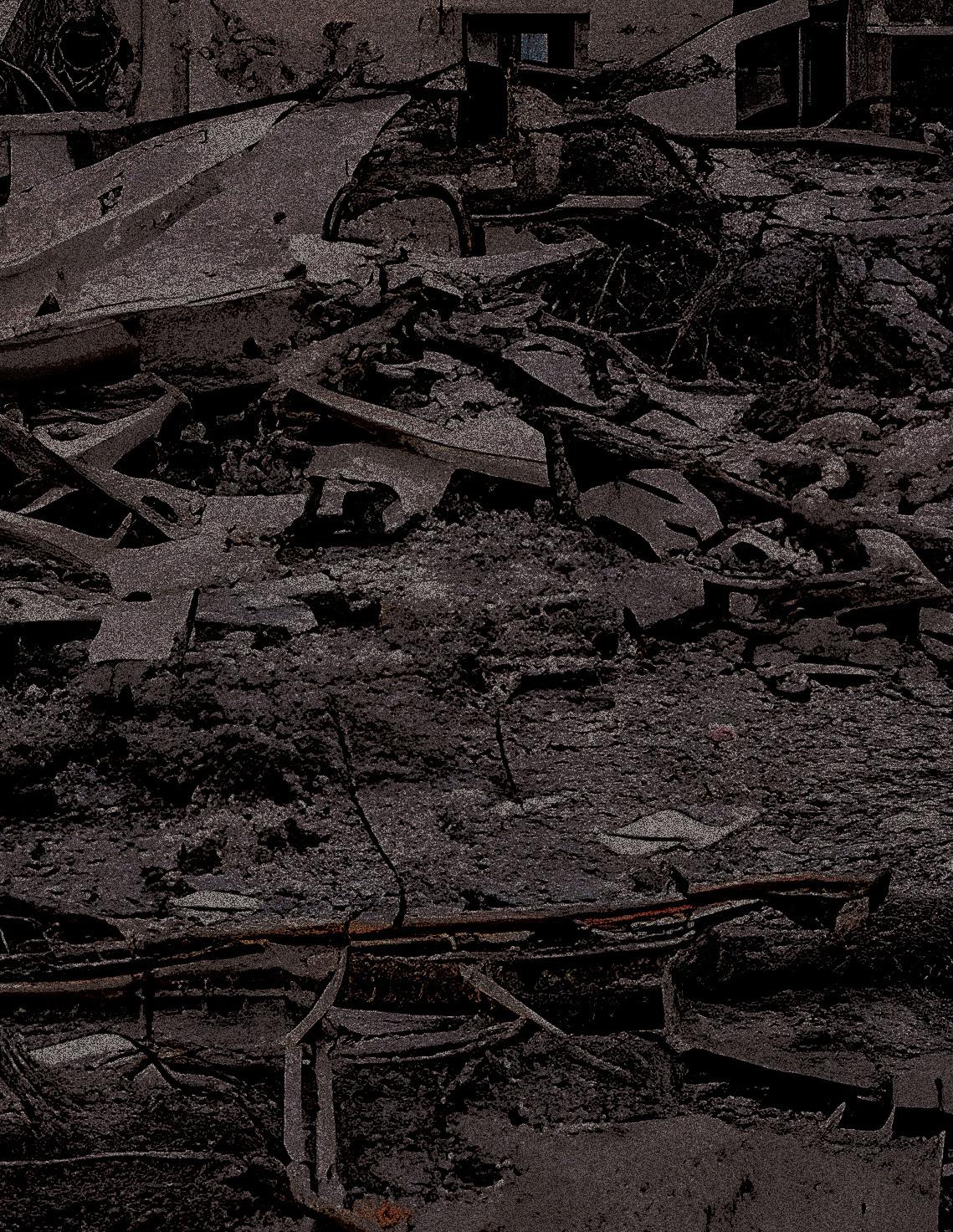
In the wake of Russia’s unprovoked invasion in 2022, Ukraine has found itself at the epicenter of what could be the most significant European conflict since World War II. This invasion not only highlights the deep-seated historical tensions between Ukraine and Russia, but also signals a broader geopolitical showdown involving major global powers. The conflict underscores Ukraine’s critical position at the crossroads of Europe and Russia, marking a pivotal moment in international relations that could shape the global order for decades to come.
The Roots of Conflict
Ukraine’s path since gaining independence from the Soviet Union in 1991 has been one of a nation striving to forge its identity while being pulled between the gravitational forces of the West and Russia. The country’s cultural, economic and political ties with Russia contrast sharply with its aspirations to integrate more deeply with Western institutions like the European Union (EU) and the North Atlantic Treaty Organization (NATO). This tug-of-war reached a climax with Russia’s annexation of Crimea in 2014 and the subsequent support of separatist movements in the Donbas region, igniting the deadliest European conflict since the Balkan Wars.
The origins of the current conflict can be traced back to the dissolution of the Soviet Union, with Ukraine’s departure dealing a significant blow to the superpower. Over the past three decades, Ukraine has oscillated in its orientation between East and West, with internal divisions often reflecting this geopolitical dilemma. The country’s Westward drift, especially its moves to deepen ties with the EU and NATO, has been met with increasing hostility from Russia, culminating in the 2022 full-scale invasion.
“Putin is absolutely ruthless, the propaganda machine there is very strong and he has no intention of stopping in Ukraine. It didn’t stop with Crimea,” said Angela Boelens, Founder of Iowa Newcomer Integration, Community and Exchange (IA NICE). “He’s going to continue and he’s gonna continue into Poland. His ambitions are limitless…and they [Ukrainians] understand Putin may be a part of that part of the world for a very long time. Nobody here knows where he’s going to continue.”
The decision by Russian President Vladimir Putin to invade Ukraine has been widely criticized as a miscalculation, potentially marking a historic turning point in European security.
“So the question is if Ukraine falls to Russia, which country will be next?” said Maryna Baydyuk, President of United Help Ukraine.
The invasion has not only failed to achieve its immediate objectives but has also galvanized international support for Ukraine, hastening its integration with Western political and military blocs.
Geopolitical Flashpoints
Ukraine’s strategic importance stems from its historical role as a cornerstone of the Soviet Union and its position as a buffer state in the post-Cold War security architecture of Europe. The annexation of Crimea and the conflict in Donbas have shattered the peace in Europe, highlighting the fragility of the current international order and the resurgence of great power rivalry.
At the heart of Russia’s aggressive posture towards Ukraine are deep historical, cultural and political ties.
“There is a very long history of Ukrainians resisting Russian imperialism and Ukraine as a country going back before Russia and Moscow were even on the map. We were an independent, fast, prosperous country,” said Baydyuk.
The Kremlin views Ukraine as central to its identity and global stature. With the annexation of Crimea and support for separatists in Donbas serving as measures to protect ethnic Russians and preserve its influence. However, these actions have isolated Russia internationally and led to significant economic sanctions, without securing its strategic objectives.
Russia’s long-standing grievances with NATO expansion and its perception of encirclement and humiliation have driven its aggressive tactics, which have ultimately backfired, leading to increased military and economic support for Ukraine.
Ukrainian Refugee Realities
As of February 2024, there are nearly 6.5 million Ukrainian refugees globally displaced, and an estimated 14.6 million Ukrainian people need humanitarian assistance.
“We [Ukrainians] did see it coming, but we did not want to believe it. When you have 100,000 troops at the border, it’s all for nothing. And then of course, no matter how prepared you are, or how much you believe in habit, nothing prepares you for that moment. I didn’t believe it would happen. But people did get there. We’re trying to get ready for it,” said Baydyuk.
A Ukrainian refugee, Anna, who is being assisted by IA NICE, stated, “It was all good. And when the worst started, of course, everything was destroyed. Our business building was also hit by a rocket and we had to snatch everything.”
Due to the decline of comprehensive media attention, the genuine conditions of the occupied territories and those held captive are unknown. “Unfortunately, we don’t want to know what’s really happening there. They’re [Ukrainians] tortured, kidnapped, and raped. It’s happening every single day to the civilian population in occupied territories,” said Baydyuk. “On top of that, Ukrainian children were kidnapped and illegally transported to Russia. I think the number goes up to 50,000 children who are now in Russian territory illegally.”
“When you hear stories, that’s what really motivates you to remember that this is not just a war,” said Baydyuk, “This is a genocidal war. There is no other objective than to wipe out this population, and that is not going to happen.”

International Response and the Future of the Conflict
The global reaction to Russia’s invasion has been swift and decisive, with the United States, EU and their allies ramping up military, economic and humanitarian aid to Ukraine. International sanctions against Russia have escalated, targeting key sectors of its economy and the personal fortunes of Russian elites. “It’s impossible. It’s just simply impossible [for Ukraine] to win the war if we’re not providing the aid,” said Baydyuk.
The conflict has also spurred a reevaluation of European security policies, with NATO and EU member states reassessing their defense and energy strategies in light of Russian aggression.
Ukraine’s response to the invasion has been marked with remarkable resilience and determination. Despite the overwhelming odds, Ukrainian forces have managed to stall Russian advances, recapture territories and inflict significant casualties on the invaders.
“Ukrainians always knew that they had the roots that helped them in their resilience to any invasion. We have language and the culture, it was distinct, it was never lost,” said Baydyuk, “…because of that spirit of freedom, Ukrainians never gave up and also always wanted to be an independent nation with their cultural traditions.”
The support from Western allies has been crucial, with pledges of advanced military aid and the imposition of sweeping sanctions on Russia aiming to alter the Kremlin’s calculus.
Foreign Media Coverage
The power of media attention can influence government responses and humanitarian aid allocations. With the extensive media coverage, public donations for Ukrainian relief efforts increased heavily. Further, the duration of media attention often correlates with the magnitude and immediacy of the crisis, overall affecting long-term aid efforts.
However, what are the implications of sustained attention, or even changing rhetoric?
“The coverage was comprehensive, showing what was happening in Ukraine. There was more talk about victory and saying all now believe [is in] that victory,” said Baydyuk.
There is now a conscious shift in the media to producing headlines that question how long the war will really last and how long it will take Ukraine to fall to Russia.
“So the media always plays a crucial role in preparing our minds for what to expect, so this is what’s happening now. It’s sad news for Ukraine,” said Baydyuk.
Without full support from the United States, “we will be fighting a much bigger battle later. And I think we’re damaging our reputation around the world by not holding true to our commitment and to our reputation as being a world leader that supports democracy,” said Boelens.
Bill for Ukrainian Aid
A comprehensive bill providing Ukraine with approximately 65 billion was passed in the United States House of Representatives but is being held up in Senate debates.
“We see the bill is for $65 billion [on the] table so that is a huge, huge difference,” said Baydyuk. “However, for Ukraine to win and sustain this Russian force, this genocide, we must have support from the US, the European Union and other countries in the world.”
The general sentiment with Ukrainian aid stuck in Congress is saddening. “Unfortunately, because of that aid being stuck in Congress, Ukrainians don’t know if they’re denied aid…You have people who are sitting in trenches, how are they going to fight multiple rockets?” said Baydyuk.
“My hope now is to influence our legislative group to go ahead and fund Ukraine and I think once they get past those funding hurdles, they can quit talking about it. I think they’ll [politicians] feel more comfortable returning to the narrative that we have to do this right now, even if they [politicians] think that we need to support Ukraine,” said Boelens. “They’re [politicians] worried about speaking about it. I think once we get support for Ukraine, I think they [politicians] can go back to a place of being more supportive in their narrative.”
The Forgotten War
The emergence of shifting media rhetoric throughout the world and the priority of geopolitical interests have begun to shift attention away from Ukraine. The conflict in Ukraine is more than a regional dispute; it represents a fundamental challenge to the post-World War II international order. With no immediate prospect for a diplomatic resolution, the world watches as Ukraine defends its sovereignty against Russian aggression, a struggle that epitomizes the broader confrontation between authoritarianism and democracy.
“They’re [Ukrainians] determined, they’re motivated and they know what they’re fighting for. They’re fighting for their own lands. Russia, I don’t know what they’re fighting for. What is the ultimate goal they’re fighting for? Russia will never conquer Ukraine,” said Baydyuk.
In the United States, media rhetoric around Ukraine has become more dependent on political partisanship. “They [Republicans] are very supportive of Ukrainian people here in the United States and continue to support the efforts in Ukraine, but they will not go against their party votes. I think that’s unfortunate,” said Boelens.
As the conflict continues, the outcome will not only determine the future of Ukraine but also the shape of global power dynamics in the 21st century.

IPAD KIDS U.S. GOV

Constitutional or beyond the realm of government control? Critics
are skeptical of the new Kids Online Safety Act.
“From the dawn of the Internet, there has been a concern about Minors having access to harmful materials,” said Justin Holmes, Associate Professor of Political Science at the University of Northern Iowa.
The United States Senate is attempting to remedy this concern with the introduction of the Kids Online Safety Act (KOSA). According to Richard Blumenthal, a key proponent of the bill, KOSA would “require social media platforms to provide minors with options to protect their information, disable addictive product features, and opt out of personalized algorithmic recommendations.”
Implications of KOSA
According to the proposed bill, parents and guardians would be allowed to report materials they deem inappropriate. The bill would require children to get permission from a guardian in order to view many social media platforms. These guidelines have sparked debate surrounding the constitutionality of the bill.
“In particular, my big concern is that it does very little to define what material is covered and leaves enforcement largely to the State Attorney General with a lot of discretion. This seems to put content related to many marginalized groups at considerable risk,” said Holmes.
Other acts, like the Communication Decency Act of 1995, have attempted to prohibit anonymous internet harassment and abuse to protect children. This bill was struck down after it was deemed unconstitutional. This has caused many to question the methods that the government will use to regulate internet usage among children, and the infringement of their online freedoms.
“Age verification seems inevitable under KOSA. If the law criminalizes disseminating
material to some, then sources will need to find ways to verify the age of people requesting access,” said Holmes. “The concept of age verification poses many questions for internet users. “What does the technical solution look like? Is this secure? Who decides what sites/content needs age verification?”
Regardless of the technical implications that come along with the introduction of KOSA, should it be up to the U.S. Government to decide what information children have access to? Or should this be the sole responsibility of parents and guardians? Supreme Court cases discussing the restriction of internet access for minors have been historically debated.
The Supreme Court Response
Reno v. ACLU (1997), argued that censorship provisions imposed online were unconstitutional because the terms outlined in provisions were too broad. Additionally, the court argued that censorship laws would criminalize the First Amendment-protected right to free speech. Ginsberg v. New York (1968), argued that censorship of inappropriate material did not depend on whether the person was an adult or a minor, but whether the content imposed direct harm on a particular subject.
The introduction of KOSA faces many of the challenges that previous bills have faced, including regulatory terms that are too broad. “[KOSA is] written so broadly that it might limit access to things like medical information or discussions of LGBT issues,” said Holmes.
With provisions that would completely limit access to sex education, LGBTQ+ resources, and medical resources, it’s worth asking if KOSA does more harm than good.
Data from the National Library of Medicine shows that sexually explicit content can cause long-term damage in adolescents.
“Children who have less time online interact with people better, are more prepared to have conversations, and have learned to formulate their own thoughts,” said Tina Gunn, a mental health therapist specializing in work with adolescents.
Despite the benefits of limited social media access, Gunn thinks that KOSA will do little to prevent children from being exposed. “Young children are exposed to inappropriate things at an early age,” said Gunn. “Drugs, sex, politics… kids will find their way around any barrier put in front of them when it comes to technology.”
WORDS SKYLAR LATHROP DESIGN PAIGE MINOR
WHAT’S THE FUTURE OF THE GOP?
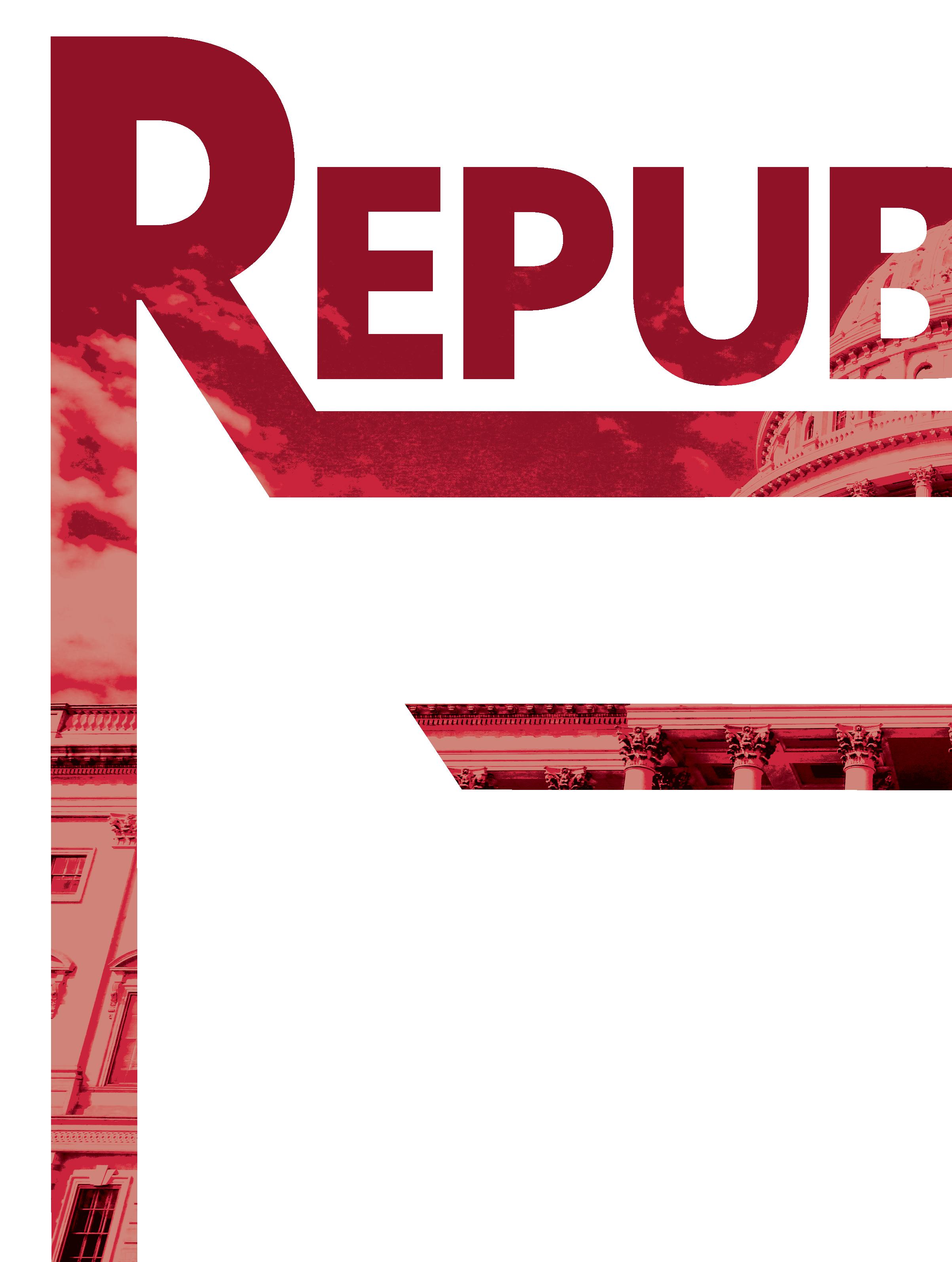
On Wednesday, March 6, Republican presidential candidate Nikki Haley dropped out of the race after lackluster results on Super Tuesday. Haley only won the District of Columbia and Vermont. Donald Trump won the other 15 states up for grabs.
In a repeat of 2020, President Joe Biden will take on Trump in the 2024 election. Both men are neck in neck in the polls as the nation remains as polarized as ever. While the Democratic Party seems to be almost united behind Biden,
OVER STATE LINES
WORDS PARKER WRIGHT DESIGN PAIGE MINOR
CIVIL WAR
The Grand Old Party has shifted dramatically since the days of Lincoln. What is the direction of the Republican Party going forward?

there has been a noticeable split within the Republican Party.
Haley refused to endorse Trump when she dropped out, leaving her support base unsure what they will do next. Some have said they will reluctantly vote for Biden in order to prevent Trump from getting back to the White House.
“Our country is in disarray and the world is on fire, but it doesn’t have to be this way. It will [continue to be this way] if we elect [Trump] again. We will regret it,” said Nikki Haley in a press conference at an Urbandale precinct during the Iowa Caucus.
Haley had gained support from both Democrats and moderate Republicans for being the most centrist candidate and being willing to fight back against Trump and the farright MAGA Republicans.
Haley argues the future of the Republican Party and the
entire United States is at stake. She said that Trump does not represent the Republican Party she knows and that changes need to be made.
“We have to acknowledge some hard truths. Republicans haven’t won the popular vote since George Bush Sr.1, that is nothing to be proud of,” Haley said in her speech. “The only way we’re gonna win a majority of Americans is if we have a new generational leader. You don’t counter Democrat chaos with Republican chaos.”
Republicans in the Modern Age
When looking at the Republican Party now, many compare it to about 16 years ago when the late senator from Arizona, John McCain, was the Republican nominee for president in 2008. McCain gained praise from both sides of the aisle for
being a respectable politician and crossing party lines to get to know everyone and get work done. He was also notably outspoken against Trump during the 2016 election, and condemned MAGA.
In a final act of defiance by McCain, Trump was the only living president not invited to – and subsequently did not attend – McCain’s funeral in 2018; which was attended by Democrats and Republicans alike, including former presidents Clinton, Bush and Obama. Bush and Obama also delivered a joint eulogy to honor one of McCain’s dying wishes. President Carter was also invited, but he could not attend due to health reasons.
Since Trump took control of the party, it has continued to veer further right with many believing this to be the future of the party.
However, former Vice President Mike Pence told Fox News he “cannot in good conscience endorse Donald Trump.” Pence did not say who he would vote for, but his and Haley’s refusal to support the former president further reveal the divisions within the party.
In an interview with Donald Trump Jr, he said he believes that the party is more united than ever before.
“Republicans were in shambles before my father ran for president. Now we are more united than ever to stop the Democrats and their ridiculous agenda they are forcing on everyone across the country,” Trump Jr. said.
Trump Jr. said that Haley and her supporters are the Republican Party of the past and that MAGA is the future of the United States.
“If you want to be weak and be part of every war ever, vote for Nikki Haley. If you want to be part of a radical,

almost fascist regime, vote for Biden,” Trump Jr. said. “If you want peace and prosperity, my father is the guy for that. We had world peace under Trump2, that was all taken away when [Biden] stole the election3.”
Trump Jr. said that his father’s legal issues are only further unifying the party and he does not believe Republicans are as divided as others say.
Republicans Against Trump
Besides Haley, another modern Republican outspoken against Trump is former U.S. Representative from Wyoming, Liz Cheney.
After the Jan. 6 attack on the U.S. Capitol, Cheney became known for being one of the leaders in the movement to impeach Trump, as well as to prosecute him and his MAGA supporters responsible for the capitol insurrection.
In an interview with Cheney, she spoke about how she feels pride knowing that she is on the “right side of history” unlike a lot of her Republican colleagues.
“The way that our politics is operating right now is not how it’s supposed to operate,” Cheney said.
She said she feels bad for the younger generations who have grown up knowing only the current state of the Republican Party and the political atmosphere as a whole.
Cheney believes the biggest threat to the United States is that Trump has his dedicated base of followers.
“The Republican Party has chosen to embrace a person who has attempted to overturn an election, attempted to seize power, has refused to commit to the peaceful transfer of power [and] lead an attack on our capitol that put our legislative branch in harm’s way,” Cheney said.
She emphasized the threat posed by Trump and the Republican Party is “very real and existential” and should not be ignored.
Cheney, while disagreeing with policy and political views of the Democratic Party, said she admires the Democrats for their continued commitment to the Constitution.
If you want peace and prosperity, my father is the guy for that. We had world peace under Trump2, that was all taken away when [Biden] stole the election3.
DONALD TRUMP JR EXECUTIVE VICE PRESIDENT OF TRUMP ORGANIZATION
“I think most Americans want a leader who leads with a reverence for the Constitution; people who put country over self,” Cheney said. “It’s unfortunate, but Democrats are the only major party left who do. It’s clear Republicans no longer care about [the Constitution.]”
She went on to say that it is important for everyone, especially
32 Spring 2024
the newer generations, to step up and take charge to try and fix the problems that have been made.
“It’s going to be necessary for all of us to decide we aren’t just going to be bystanders. It’s something we all have to do,” Cheney said. “I hope to see more people get engaged so we can defeat Trump for good.”
A Democratic Perspective
Not every Democrat is in support of Biden, but general consensus seems to be they believe Trump is still the biggest threat to the country.
“There’s a lot of Republicans that I respect and there’s still good people in the party. But it’s clear [Republicans] have become an extremist party hijacked by Donald Trump and his MAGA friends,” said Iowa Democratic State Rep. Adam Zabner. “[Republicans are] really out of step with what everyday Americans want when it comes to personal freedoms [and] government services.”
Zabner believes that modern Republican’s (especially within the MAGA base) biggest problem is trying to control every part of people’s lives, including every part of government all the way down to things like local school boards.
He said he can’t explain how Republicans went from McCain to Trump, and that he doesn’t fully know what the future will hold. Also, he is disappointed to see the direction they are headed, as it makes it much harder to work with them.
“I think of Iowa’s history with Robert Ray, one of the greatest governors of Iowa. He was a Republican. I actually have a button I wear around the Capitol that says ‘what would Ray do?’” Zabner said.
He expressed concern about the current Gov. Kim Reynolds and her attacks on moderate Republicans in Iowa, a lot of whom are incumbents.
“I don’t know if [Robert Ray] would recognize the Republican Party that is in charge today,” Zabner said.
What Does the Future Hold?
“To put it simply, I think it’s extremely important that [Trump] never be elected president again,” Cheney said.
Cheney believes that after the coming election, the entire political system needs to be reexamined. She also wants to see more young people get involved and get their voices heard. A major point she emphasized was civil discourse and not treating people with different viewpoints as enemies.
“We’re not all going to agree on every issue. Frankly, we shouldn’t. Vibrant debate is what makes this nation work,” Cheney said. “But we need to treat each other with respect. Something, once again, the Republicans have lost.”
Rep. Zabner hopes Republicans will come back and be
willing to have discussion and work with Democrats again. He hopes they will learn from their current mistakes and go back to the party of Robert Ray or John McCain.
“There are a lot of issues that shouldn’t be partisan and used to not be,” Zabner said. “I hope we can get back to a point where we can have these discussions and help people. That Democrats aren’t the only ones who care about certain issues.”
Zabner and Cheney both said they are saddened to see once great, respectable Republicans fall to the whim of Trump for political convenience. They said it won’t end at stopping Trump, but that every person who got Trump to where he is should also be held accountable.
Cheney did not outright endorse Biden or say she’d vote for him. However, she did say Trump should not enter the White House again.
“I disagree with the Biden Administration on most things. However, the nation can survive, and has survived on bad policy. It will not survive on a president who plans to torch the Constitution,” said Cheney.
Zabner also emphasized the same point Cheney made of how important it is to get more young people involved in politics. Cheney mentioned the stakes and how young people are the future of the United States.
“I don’t care if you’re Democrat or Republican, we are all American,” Cheney said. “If we don’t get people engaged, we may lose our freedom and the country as we know it.”
1 - CLARIFICATION: Republican George W. Bush won the popular vote when he was reelected in 2004, however he lost the popular vote in the 2000 election against Al Gore. His father, George H. W. Bush was the last Republican to win the popular vote on their first try in 1988.
2 - FACT CHECK: According to both the World History Association and the United Nations, there has never been a period in recorded human history of complete world peace. This includes Trump’s presidency.
3 - FACT CHECK: There is no evidence that Joe Biden “stole” the 2020 election. Multiple courts, including Trump appointed judges, have ruled the election was fair.
Drake Political Review 33
IOWA’SSTAND AGAINST VAPING

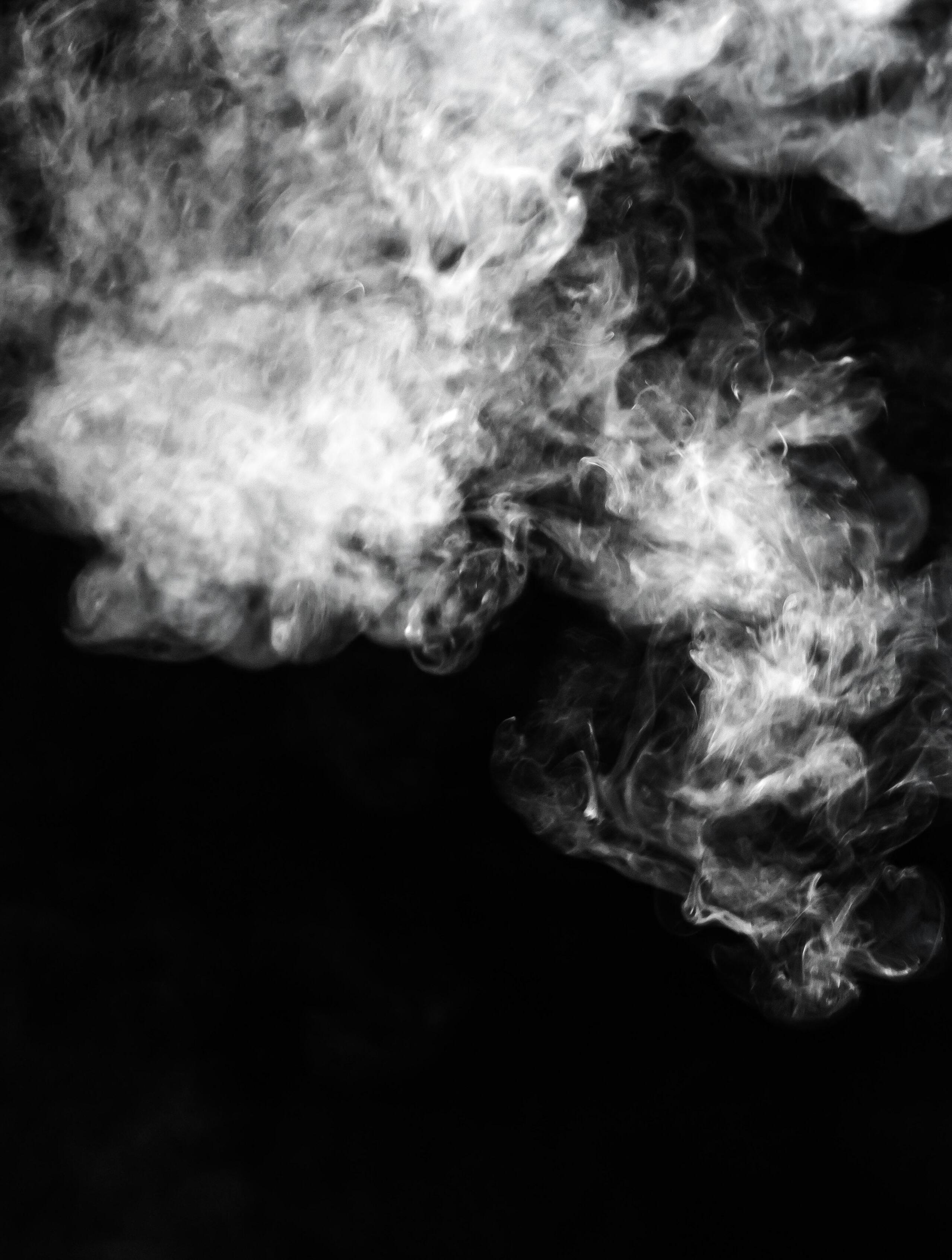
IOWA BRED 34 Spring 2024
How rapidly changing smoking and vaping regulations are influencing Iowan youth.
WORDS MARGARET GORHAM DESIGN EMILY ZELLER
Willy Wonka once made gum that tasted like a threecourse meal and now vape companies are applying the same concept to air.
According to Forbes Advisor, nine out of 10 youth vape users across the nation are opting for flavored e-cigarettes. With the increasing popularity of flavored smoking devices, there has become an increasing need for legislation that regulates the sale and distribution. Many states have implemented smoke-free legislation as a deterrent for young users, but not all states have specific stipulations regarding vapes or e-cigarettes.
Since 2019, federal law has prohibited the sale and possession of vapor products by individuals under 21 years of age. Moreover, Iowa State law declares the use of smoking products is prohibited in state-operated and owned buildings. In Iowa, there are various organizations set up to directly work with adolescents to educate them about the harmful effects of vaping and the benefits of quitting. These organizations are working to solve this public health issue while also recognizing that quitting is a process and providing support to those trying to quit.
Known for their bright orange advertisements, the Truth Initiative is a non-profit organization that helps educate young people about the dangers of vaping and equipping them with the tools to quit. Currently, their most popular program is their “This Is Quitting” program which is a free text messaging service that sends a user motivational quotes and tips for quitting.
“And you know, with Iowa, it’s true, they spend less than 15% of the money that they receive from tobacco settlement money and from tobacco taxes, less than 15% of that actually goes to tobacco prevention programs.
So funding is, you know, a huge issue,” said Maham Akbar, Director of Public Policy for the Truth Initiative.
The Truth Initiative has been able to reach more than 700,000 adolescents nationally who vape or smoke using “This Is Quitting”. This free program uses both scientifically accurate information and messages from individuals who have quit themselves. Services like these offer a beneficial resource to states like Iowa where there is a lack of funding for tobacco prevention programs.
“There are still 2.1 million middle and high school students that are currently using e-cigarettes,” said Akbar. “And that’s according to national data, the national youth tobacco survey, and so many young people are using these e-cigarettes daily or nearly daily.”
Many universities and schools have implemented comprehensive policies that prohibit the use of vapes and e-cigarette devices. University of Iowa, Iowa State, and Drake University all have stipulations regarding the prohibited use of vapes and e-cigarettes, by staff and students on school property.
“A lot of young people think because it’s not traditional smoke, you can’t see it or smell it, It doesn’t stick to your clothes the way tobacco smoke does when you leave a restaurant or bar, that it’s not as harmful,” said Lina Tucker Reinders, Executive Director of the Iowa Public Health Association.
Advocates like Reinders want youth to be aware of the heavy toll that nicotine takes on their bodies and minds. Nicotine products have a proven higher rate of addiction and can become a gateway into tobacco products. The FDA has struggled to keep up with the continuous innovation of products and their packaging as companies find new ways to evade FDA regulation.


Drake Political Review 35
KEEPING UP WITH
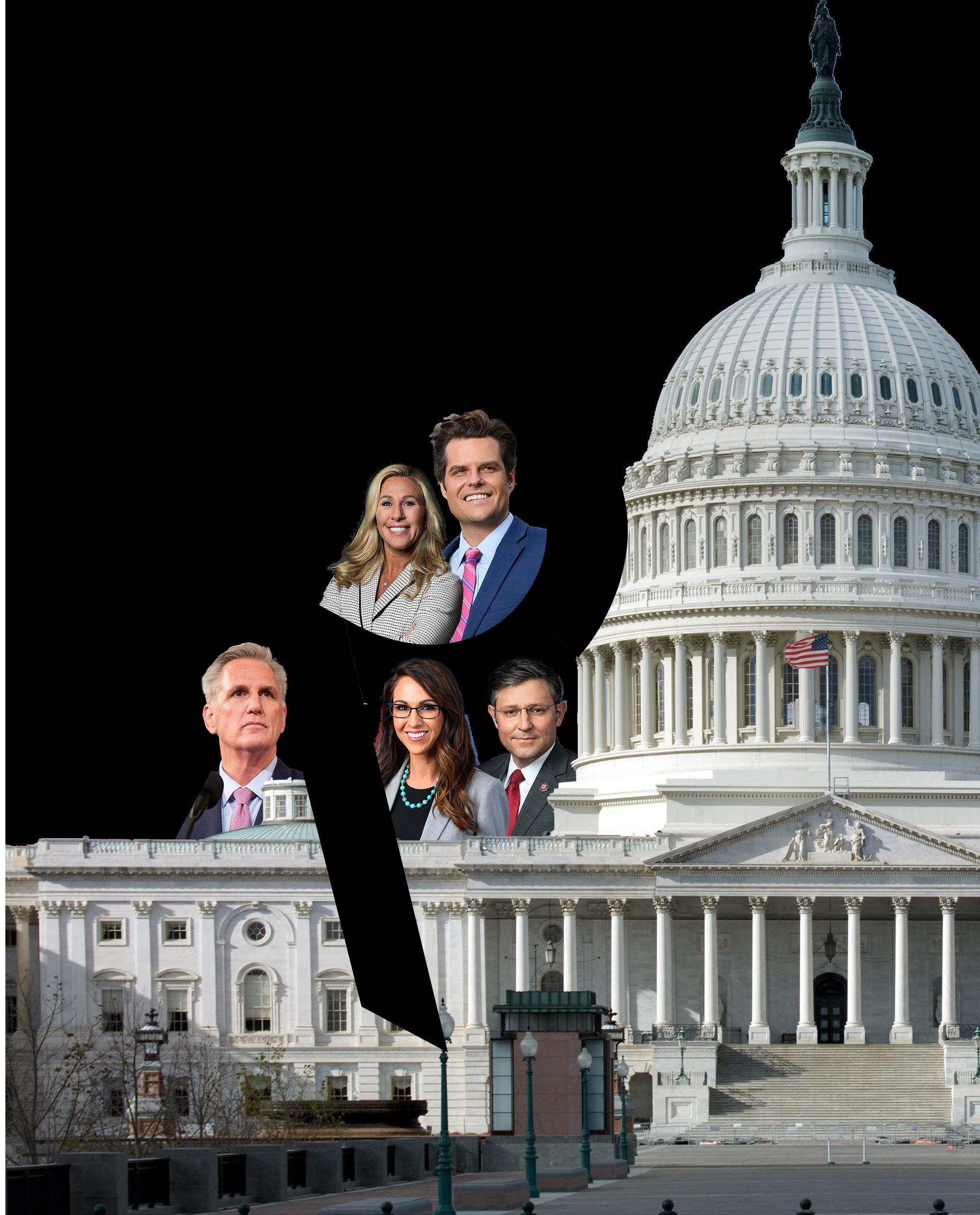
OVER STATE LINES 36 Spring 2024
WORDS JACK HARRINGTON DESIGN EMILY ZELLER
The United States House of Representatives has begun an ineffectual movement that has shown through to the public.

HHOUSE THE KUWTH
ave you ever wanted to watch a reality TV show that actually affects your life and country? No? Well, that’s a shame because the United States House of Representatives is exactly that. It has a large cast of around 435 representatives, depending on the day, and many other fun side characters. Some of the wine-throwing reality TV stars include Representative Marjorie Taylor Greene, Representative Matt Gaetz, Representative Lauren Boebert and Speaker of the House Mike Johnson. In the middle of this season, they voted their former main character, ex-Speaker Kevin McCarthy, off the island. That being one of the more dramatic moments in recent years on the Hill, which is quite an accomplishment considering recent years on the Hill.
The 118th Congress
The current House is run by Republicans, who hold a slim majority with a five-seat lead over Democrats and just a one-vote majority. The majority has only shrunk over the past year and a half, with multiple seats becoming vacant, almost all of which had been Republican-held seats. Democrats flipped one of the seats in February by electing Democrat Tom Suozzi to
former representative George Santos’s seat, who was expelled for a litany of reasons. In March, Republican Representatives Ken Buck and Mike Gallagher announced early retirements from the House due to their contempt for fellow House Republicans. This was a move made in order to hurt the party they once entirely associated with and believed in and left the Republican majority hanging on by a thread.
The Republican’s tenure with the majority has not been extraordinarily productive. This started at the very beginning of this session with the selection of a Speaker of the House. Selecting a speaker is usually relatively pre-
Drake Political Review 37
determined, and the vote is more procedural than necessary; that was not the case this time. It took them 15 rounds of voting to decide on Kevin McCarthy. On his route to the speakership, he made some concessions to the far-right wing of his party that came back to bite him quickly. This was the first time it had taken more than one ballot to elect a speaker since 1923. It was also the first time it took more than nine ballots since 1859.
His time as speaker ended up being the third-shortest speakership ever, lasting less than ten months. One of the concessions he had made to get the role of speaker was lowering the threshold of votes necessary to bring up a motion to vacate the speakership. In basic terms, that means it would be easier to fire him from his job as speaker. On October 3, 2023, Representative Matt Gaetz did precisely that and filed a motion to vacate the Speakership. The House then voted, and he was removed as speaker, the first time that has happened in history. Luckily, finding a new speaker went smoothly and had no issues. Just kidding, it took them over three weeks to find a new speaker. There were multiple Republicans who campaigned for the job and five official nominees. Each one of the nominees had been nominated by a majority of their republican colleagues. Each one of them had a little bit of time on top. Eventually, each one dropped out after many issues. Their final pick ended up being Representative Mike Johnson. It took four ballots, but they finally finished the job after a twenty-two-day battle. All the while being unable to govern due to the lack of a speaker, leaving the legislative branch effectively shut down.
What’s Next
The 2024 election is in November. There will be a massive turnout due to it being a presidential election year. As is true, every two years, every seat in the house will be up for election. There will be seats flipped for both sides, and it will likely stay a slim majority for whichever party has it after the election.
“The Republican party is not what it used to be. MAGA Republicans have caused this last session to be one of the most unproductive and chaotic in our country's history,” said Melissa Vine, candidate for the United States House of Representatives in Iowa’s third district. “For many politicians, their identity is as a politician, so they will bend their values to get elected.”
It is not hyperbole to say that this is one of the least productive sessions of Congress ever. In the 118th Congress, which started January 3, 2023, the House has passed 47 bills. In the 117th Congress, which was not considered extremely productive, the House passed 251 bills. While highly unlikely, this House could pass 204 bills in the next seven months and could be seen as, at least, equally productive as the last House. But the far more likely path this will be considered one of, if not the, most unproductive and least effective House in American history.
As a country, the United States is amid what many would call an extremely critical juncture. With the battle over women’s reproductive rights at play, as well as allies and human rights organizations looking to the U.S. for help with resources for both the UkraineRussia War and the Israel-Hamas War. The U.S. is looking forward to what may be the most crucial election in American history.
“Abortion is on the ballot,” Vine said. “Even if you have never voted for a Democrat, please consider a future with no legal and safe abortions in this country.”
The House has struggled to get almost anything done, including the basics of being an American Legislature. This November, the American people will have the opportunity to decide whether the Republicans will continue to hold the majority in the House. It will be interesting to see how the people vote based on how ineffective their legislature has been.
“We need Congressional candidates who can turn out the vote by collaborating with State and Federal candidates,” Vine said. “A big piece of this is educating and empowering college-age voters to get involved.”
38 Spring 2024
TRIGGERING
CH AN GE
WORDS LILY WASSERMAN
DESIGN EMILY ZELLER
In the wake of a school shooting that left a Iowa town devastated, the state continues to grapple with gun legislation.
In Feb. 2024, the Iowa House approved a bill that would grant school faculty permits to bear arms on school grounds and qualified immunity. Staff would have to go through training before being granted that permit.
One major roadblock has been insurance companies, as the primary insurer for Iowa schools has refused to insure districts that arm their staffs. Though, a bill passed in the house last year that would make it illegal for insurance companies to refuse to insure schools based on that reason. Additionally, in the recently-approved bill, districts with more than 8,000 students are required to hire security or school resource officers that would have full police powers, though school boards could opt the districts out.
The bill comes a mere 4 months after the school shooting in Perry, and part of the reason for its being on the floor is the idea that armed staff will protect students by their ability to quickly disarm other threats. However, those opposed argue that the presence of a gun will instead increase the risk of homicides in schools, and diverts funding from proven solutions.
Drake Political Review 39
A State Divided
Today, Iowa is divided on how to approach gun violence. Not only has legislation changed the face of discussions related to the Second Amendment, but it has become an increasingly polarizing political issue Lobbyists agree that gun legislation has become a political issue, and that having a conflicted legislature deeply impacts their ability to lobby about the Second Amendment.
Richard Rogers, a board member and volunteer lobbyist for the Iowa Firearms Coalition, got involved with the group when they went under a different name, Iowa Carry. In 2008, the group was focused on changing Iowa permit law from “may issue” to “shall issue”.
“Our focus is to ensure that government at all levels, but particularly the state government and its political subdivisions, recognize, protect and actually respect our fundamental right to keep and bear arms,” Rogers said.
The group, which is nonpartisan, encourages candidates to stump for gun
We know that gun violence should be the number one killer across the country. And yet it's something we don't talk about.
Sarah Hayes, Local Group Lead of Moms Demand Action
restriction issues while campaigning. However, Rogers said that most of the group’s allies are Republican today.
“Even if somebody [in the Democrat party] agrees with us in some regards on our issues, they’re not going to cross party lines and vote for anything in the legislature – the few Democrats that are left – because of the way their party is set up right now. It’s changed a lot in the last dozen years,” Rogers said.
Moms Demand Action Pushes Back
In contrast to the IFC, Moms Demand Action, a lobbyist organization that aims to increase awareness of gun safety measures, has had trouble making progress with the majority Republican legislature.
Sarah Hayes, local group lead for Moms Demand Action and a physician, started working with Moms Demand Action after a shooting made her want to go into activism. She looked online for groups to join, and found Moms Demand Action from that.
“I had to do something and had to find a way to use my anger and try to do something about the problem,” Hayes said.
Moms Demand Action is a faction of Everytown, a nationwide organization dedicated to ending gun violence, which provides them with the necessary funding and resources. Members of the Des Moines area group lobby at the state capitol and work with Meals on Wheels to provide aid to families impacted by gun violence. Right now, the group is advocating for secure storage for firearms, especially in locked boxes that would prevent minors from accessing them, but their overall goal is raising awareness of gun violence.
“We know that gun violence should be the number one killer across the country. And yet it’s something we don’t talk about,” Hayes said.
40 Spring 2024
Gun Violence Responses at the National Level
Part of this silence might come from lack of federal funding towards gun violence research. In 1996, the Dickey Amendment deterred funding towards research into gun violence, and while it was further clarified in 2018, it prevented research for two decades.
Beyond congressional changes, two Supreme Court cases from the past two decades have also changed the face of firearm legislation.
The 2008 Supreme Court case District of Columbia v. Heller granted individuals the right to firearms outside of state militia service, and to use them for self-defense. It rejected the “collective right” interpretation of the Second Amendment that said that only militias held the right to keep and bear arms.

In 2022, the United States Supreme Court case New York State Rifle & Pistol Ass’n, Inc. v. Bruen ruled that a New York law that said that there had to be “proper cause” for a person to conceal and carry a gun was unconstitutional as it went against the Second Amendment – to keep and bear arms. Now, for a state to have a restriction, it must line up with historic restrictions.
Iowa’s Recent Gun Related Legislation
On the state level, since Iowa’s legislature became majority Republican, its legislative bodies have approved more legislation that gets rid of firearm restrictions.
In 2017, Iowa adopted chapter 704.2A to its code, which states that “deadly force” can be used to “to avoid injury or risk to one’s life or
safety or the life or safety of another” in specific scenarios. This includes deadly force with guns.
As of 2021, with the induction of HF756, Iowans no longer require a permit to purchase handguns or carry firearms in certain public places. However, Iowans still need Federal Firearms Licensee, or a registered company that sells firearms, without showing a permit will need to go through a criminal background check.
In 2022, after a referendum on the ballot, Iowa added the right to own and bear arms to its state constitution. The amendment declares that any ballots restricting firearms shall be held to strict scrutiny.
Drake Political Review 41
PROTEST FRENCHTHE LIKE HOW TO
France is a leading expert in cheese and pastries, but they also know a thing or two about exercising their right to dissent.

 WORDS SCOTT JENSEN DESIGN PAIGE MINOR
WORDS SCOTT JENSEN DESIGN PAIGE MINOR
The French are no strangers to making their voices heard. From shutting down roads in entire cities to releasing piglets in grocery stores, the people of France have found creative ways to get their way.
These temper tantrums receive widespread public support, but can also be a detriment to the labor force; the French lose an average of fifty-eight work days due to protest.
Of the thousands of protests that the French have taken part in, here are some of the craziest:
The most recent Farmers Protest pushed back against the falling profits from cheaper imported goods. To win the fight, farmers blocked entire cities with tractors and other agricultural equipment. Some farmers even brought animals to release on the streets, adding to the chaos that was unfolding throughout the country.
The agricultural community further showed their displeasure by spraying government buildings with manure, and that wasn’t the first time either. In doing so, some politicians heading into the office were forced to take an extra shower.

Other farmer protests that have become popular in France are the dumping of milk trucks across major highways. A similar debacle occurred with a Spanish wine truck entering the country. Farmers even smashed hundreds of thousands of eggs in rebellion to the low egg prices across the country.
While these protests may hurt French farmers’ profits temporarily, they are highly committed and have found some unconventional ways to rally public support. Perhaps the most innovative tactic, French pig farmers released dozens of piglets around a grocery store in Southern France. The moral implications of purchasing bacon with a live pig sitting next to the cooler probably hurt the day’s meat sales. Hopefully they stocked some vegetarian options.
More recent protests involve the French pension reform. Garbage collectors staged their own protest by refusing to collect trash, letting it accumulate on the streets of Paris. This made for a couple of smelly weeks for tourists and their photos, creating the trend #MacronGarbage.
Citizens have also taken measures into their own hands by hijacking ferry boats and melting plastic on train tracks, which suspended service to the U.K. and later raised ticket prices.
When Air France proposed cutting 3,000 jobs, workers and citizens around the country drew inspiration from Bastille and stormed the corporate headquarters, chasing the head of Labor Relations out of the building. During his attempted escape, protestors literally ripped the shirt off his back. As a result, the company reversed course, with leaders fearing they’d be chased next.
Singer and actress Courtney Love was caught up in the chaos, too. Amidst the antiUber protests, her Uber driver was taken hostage and the car was flipped. She took to Twitter saying, “This is France? I’d be safer in Baghdad.”
The French know how to protest. In every instance, police arrive on scene, but very rarely do they intervene. Why? The right to protest is such an integral part of French society that it is protected in their constitution.
Maybe the rest of the world should start taking notice. Picture the change that could come if Americans started spraying government buildings and officials with manure. Hopefully they have a backup outfit in the office. The right to protest is protected in many countries around the world, so maybe we should let the chaos unfold. We, as citizens of the world, have a civic duty to uphold.

COLLEGE BROKE ARE STUDENTS

A look into what’s happening and why, and how four-year colleges across the country are finding ways to adapt to a heavy decline in undergrad enrollment.
WORDS KIRA SCHALL DESIGN EMILY ZELLER
Why spend money on college when you can make money instead? As high school seniors begin to plan their future, this is an important deciding factor for many; and plenty are opting out of the classic college experience for just that reason– they can no longer justify the cost. But what does that mean for universities across the country? As they face lower enrollment rates and budget deficits, schools must make some tough decisions in order to adapt.
College Enrollment is Declining
The COVID-19 pandemic contributed to an accelerated drop in college enrollment numbers across the country. Undergraduate enrollment fell 4% between 2020 and 2022, according to The Chronicle of Higher Education. However, these numbers have been dropping since before the pandemic, traceable back to the 2008 recession. Here in Iowa, public schools’ total enrollment dropped by just over 7,000 in the last six years, according to a report published by Iowa College Aid.
Lower college enrollment is occurring for a myriad of reasons: from demographics to money. There is one theory that is prevalent in a number of in-depth articles published about the subject– there are simply fewer collegeaged citizens to pull from than there have been in the past. St. Norbert College in Wisconsin actually cites smaller population sizes of people aged 18-22 as an ongoing issue for the shrinking of their school, according to Inside Higher Ed. In fact, a Pew Research study confirms that birth rates have been in decline since the early 2000s. Therefore, simply a dwindling population could be an increasingly prevalent factor in lowered four-year enrollment.
A Shifted Perspective
One of the main reasons for lowered interest in higher education among recent high school graduates, according to a Wall Street Journal-NORC poll taken in 2023, is that there has been a significant shift in how college education is viewed by potential students and even the adults who have already been through the experience.
There has been a loss of confidence in the system at large. Four-year colleges now uphold only a 60% graduation rate, which contributes to that lowered confidence, according to the Wall Street Journal.
Now, add to that all of the financial burdens that college students face. Money is a huge factor in the decision of high school graduates to choose other paths. With states spending less on public higher education, those internal costs are being transferred to parents and students through tuition raises, according to the National Education Association.
With greater cuts comes greater cost. For example, in Alabama, tuition to public colleges and universities increased by over $5,000 on average between 2008 and 2018. The NEA attributes this as a driving factor in the country’s student loan crisis– something that college students battle, and might not deem worth it in the long run.
Plainly put, college is expensive, and the 2023 NORC poll shows that potential students are no longer willing to pay for it. Part of the poll’s data analyzes whether people throughout the country perceive going to college as being worth the cost. Many simply do not think the quality of education is worth it. In 2023, 60% of 18-35-year-olds, arguably the target age demographic of four-year colleges, stated that they did not believe a four-year education was as valuable as its cost.
Alternative Options
Increasingly Popular
Alternatives to the classic college education, such as twoyear schools and apprenticeships, are becoming increasingly prominent among high school students planning for their futures. Many trade professions offer high pay rates causing graduates to choose vocational and trade schools instead, or go straight to the workforce.
Casey Grudzinski, a high school senior from Hustisford, Wisconsin, is one of those graduates.
“I eventually realized, working with family members and other side jobs, there were other ways to make money outside of getting a degree which would be more enjoyable for me,” Grudzinski said.
After graduation, Grudzinski is planning to take over his dad’s lawn care business and possibly find an additional outlet for his welding skills.
Grudzinski’s older brothers and friends that have gone to college told him it was a waste of time and money. Grudzinski does not enjoy school in the first place, so hearing from people who have gone through the experience say they wasted their time and money was “a big turn off.”
Drake Political Review 45
Public School Deficits
As more and more high school graduates turn to these alternative options, four-year colleges and universities across the country are facing budget deficits. Public schools are hit especially hard.
Public higher education depends on a lot of stateprovided funding. But, according to the NEA, 32 states spent less on public higher education in 2020 than in 2008. Again, higher tuition correlates with state cuts. Between 2021 and 2022, half of the states followed this trend.
Individual public schools are being affected in different ways. 70% of the money that goes into funding Alabama’s public system comes from student tuition, so it’s mostly borrowed money, according to the NEA.
Delta State University in Mississippi is at an $11 million deficit with a 48% decline in enrollment. In addition, a Wisconsin Public Radio article states that 10 out of 13 University of Wisconsin schools are facing deficits in the millions.
An additional contributing factor in schools’ funding may actually be related to whether faculty unions exist within them. According to the NEA, funding is more heavily declining in states without faculty unions. Contrary to that, in states where faculty is in constant communication with legislators, funding is actually improving.
All of this is to say that publicly funded colleges and universities are stuck in a loop: lower external funding, higher tuition, lower enrollment, repeat.
Private School Deficits
In private colleges and universities, many of the budgetary issues stem directly from enrollment declines because their funding is mostly tuition-dependent. They have no state funding to rely on at all. So, since higher education is in lower demand, private schools find themselves in millions of dollars worth of deficits. Christian Brothers University in Tennessee is in a deficit of $5-7 million due to enrollment issues, according to Inside Higher Ed.
So persists a similar loop– lower enrollment, lower funding, higher tuition, repeat.
Colleges Must Adapt
What can four-year colleges do, with their limited control, to adapt to such immense budget deficits? Aside from raising tuition, it turns out, not much.
The University of California state system’s Board of Trustees just approved a 6% increase in tuition per year, over five years. Private colleges generally raise their tuition more readily than public ones, according to the Chronicle of Higher Education. For either sector, even if raising tuition is the best, and seemingly only, option, many schools will have to worry about the repercussions of continued low interest and enrollment. So continues the loop.
Some schools have had to close down campuses, leaving fewer location options for potential students who want to pursue higher education. In a recent news release from the University of Milwaukee at Waukesha in Wisconsin, the school announced its impending closure in 2025 and explained how its programs will adapt.
“UWM’s highest priority is student success,” UWM Chancellor Mark Mone said. “As student demands change, universities must change.”
Associate programs will now be made available at a technical college in the same area and allow students to seamlessly transition to a four year university afterwards, which is the purpose of satellite schools.
Most universities and colleges across the country, however, have had to resort to program eliminations and staffing/salary cuts. These things are apparent across the country, so four-year schools may take some comfort in the fact that they are not the only ones struggling.
“We are dealing with all the issues you’re asking about and keep reminding ourselves that they are not unique to us,” said Michael P. Strysick, Chief University Communication and Marketing Officer at the University of North Carolina in Asheville.
The University of North Carolina is currently in about a six million dollar deficit. The university is doing its best to transparently communicate these struggles with students and faculty. Efforts are being made to reduce spending and university reserves will be utilized as much as possible. Employee cuts will only be made as a last resort option.
Whether it’s due to a declining population or a lack of interest, universities across the country are undeniably facing issues with increasingly detrimental effects. Many schools in the U.S. are already seeing the damaging repercussions of lowered enrollment. Lowered confidence in the world of higher education, alongside a decrease in the funding of such programs presents the potential for a new “normal” path after high school.
46 Spring 2024
3 PART RD IES
Drake Political Review 47
problem:
solution?
America has a
are third parties the
IN
WORDS NORAH JUDSON DESIGN EMILY ZELLER
THE USA
Y
America’s disillusionment with politics is growing. Younger Americans are polling consistently less and less likely to be satisfied with the current political system.
According to the Pew Research Center, these same voters are less likely to hold strictly partisan views than previous generations.
According to the Public Broadcasting Service, the United States boasts 57 political parties to choose from, but only two of them - the Democrats and the Republicans - have held presidential office since the mid-1800s. This predominantly two-party system is becoming increasingly polarized, and the way many voters are choosing to deal with this is to stick their heads in the metaphorical sand, voting down the party line because that’s what they’ve been told is best.
However, not all voters are thinking this way. In recent years, there has been a new trend on the rise, one that has been generating a lot of buzz on both the local and national levels.
Change Is In the Air
Third-party politics have always existed in one fashion or another, but they haven’t proven to be much competition for the two major parties already in play. That might be changing, however with the direction modern politics is headed. It seems, to many Americans, like third parties may be the solution the country needs.
Lu Hallmeyer, a Des Moines-based member of the Party for Socialism and Liberation is a vocal proponent of this sentiment, adding that the way the current political system is structured is contributing to
Da country where no one’s voice is being heard. According to the official newspaper of the PSL, the party was formed in 2004 by a group of people who believed “the contradictions and crises of capitalism would inevitably create the basis for a revival of socialism, despite the momentary triumph of pro-capitalist ideas and silencing of socialist ones.” The PSL party still holds the belief that the answer to America’s problems lies beyond capitalism.
“We’ve long held that we’ve been a representative democracy, but who are we representing? No one,” Hallmeyer said. “The [Democratic National Convention] and the [Republican National Convention] are decision makers on how things can happen. When you have organizations that organize races from your local level all the way up to your national level, is that representative, or is it just an organization that’s backing candidates and choosing candidates?”
Hallmeyer’s decision to join the PSL came in October of 2023, after Israel’s invasion of Palestine.
“I have done a lot of theory and research behind political movements in the [United States] and I’ve said that I’m a leftist, but past that point, I felt very hopeless,” Hallmeyer said. “Once Israel decided to invade the native lands of Palestine, [other parties] took weeks to respond, but PSL was out in the streets on October 7.”
For Hallmeyer, activism is integral to politics, making PSL’s quick response to the conflict the final deciding factor in their search for a party to identify with.
“America was founded by people who fought and struggled and will continue to be
48 Spring 2024
represented by people who fight and struggle for the correct things,” Hallmeyer said. “That’s what really motivates me to be a member of a thirdparty organization.”
From the Ground Up
The PSL party operates on a national scale, having had candidates on the presidential ballot every year since 2008. This is the case for many third parties, however, sometimes the hardest-hitting impact doesn’t come at the national level.
“Both parties are terrified of what might happen if a viable third party came along,” said Ed Fallon, a democratic state representative in the Iowa legislature from 1993 to 2006. Now that he’s left office, he has left the premise of parties behind entirely.
Fallon is currently registered as a “no party” voter.
“The majority of my positions align with what Democrats stand for, but the party has become inept at trying to provide a balanced menu that appeals to a broad cross-section of voters. It’s become the party of the status quo,” he said.
Fallon believes that in order for third parties
Both parties are terrified of what might happen if a viable third party came along.
ED FALLON, DEMOCRATIC STATE REPRESENTATIVE
to succeed, they need to focus on building their bases “one door at a time.”
“Third parties exist, a couple of them have been around for a while, but none of them are organizing a party at the grassroots level,” Fallon said. “They have conventions, they run people for senate, governor, president, but they don’t do the hard work of trying to build the base you need to have a viable party.”
Where Do We Go From Here?
Currently, Fallon hosts a talk show called “The Fallon Forum,” which has been on the air for 14 years. The show has played host to politicians from both sides of the aisle, as well as members of third parties. Fallon says his role in politics since leaving office is as a commentator, and his goal is “to incubate ideas about where the parties should be going and what the key issues are that need to be addressed.”
“Everything we do makes a difference,” Fallon said. “It’s hard to measure, but everything you do is like throwing a little pebble in a lake. Those ripples just keep going and you can’t see them when they get far enough out, but they keep going, they have an impact.”
Regardless of whether someone is a member of the two major parties, a third party or no party at all, Fallon emphasized the importance of getting involved.
“Whether it’s the education of your kids, the condition of the streets, the availability of affordable housing, the protection or lack of protection of the environment, it all affects you,” he said.
“There are a lot of people who say ‘Oh, I’m not interested in politics.’ Well, that’s too bad because politics is very interested in you!”
Drake Political Review 49
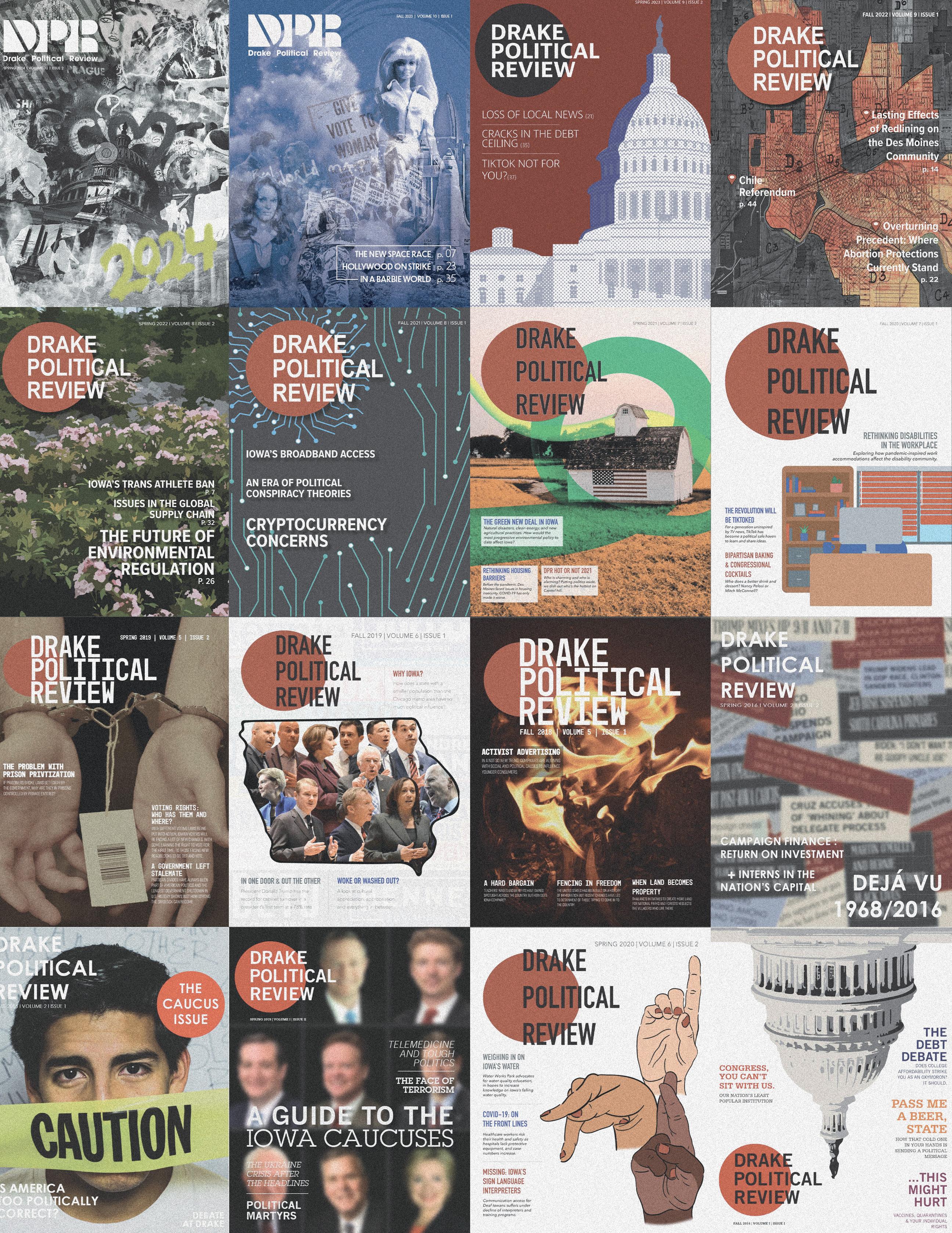


Drake Political Review 51 KEEP UP WITH OUR MAGAZINE AND LEARN ABOUT WRITING AND DESIGN OPPORTUNITIES BY FOLLOWING US ON INSTAGRAM: @DPRMAGAZINE LET’S
JOIN OUR MAILING LIST
KEEP TALKING
Institute’s Student Mailing List!
Be the first to:
• Hear about exciting news and events
• Register for limited-capacity events
• Learn about student employment and scholarship opportunities

The Harkin Institute for Public Policy & Citizen Engagement at Drake University is dedicated to the study of issues that define our public life and to engaging students and citizens in constructive dialogue regarding these issues. Founded on the premise that good public policy is best achieved when policymakers have access to high-quality information, political processes are open and well-understood, and citizens are informed and active participants, The Harkin Institute seeks to create opportunities for thoughtful policy discourse in a nonpartisan environment.
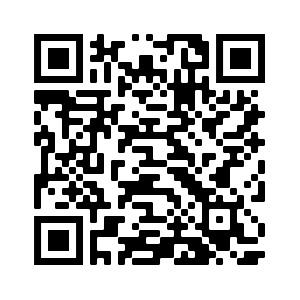

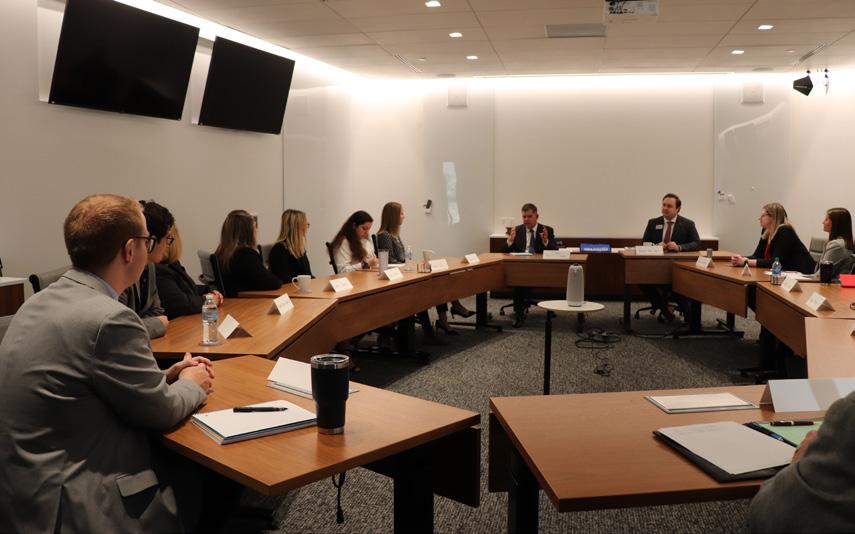
Find Us Online!
Website: harkininstitute.org
Facebook: The Harkin Institute
Twitter: @HarkinAtDrake
Instagram: @Harkininstitute
Linkedin: The Harkin Institute
for The
Sign up
Harkin
Scan here
sign up!
to










































 WORDS SCOTT JENSEN DESIGN PAIGE MINOR
WORDS SCOTT JENSEN DESIGN PAIGE MINOR









